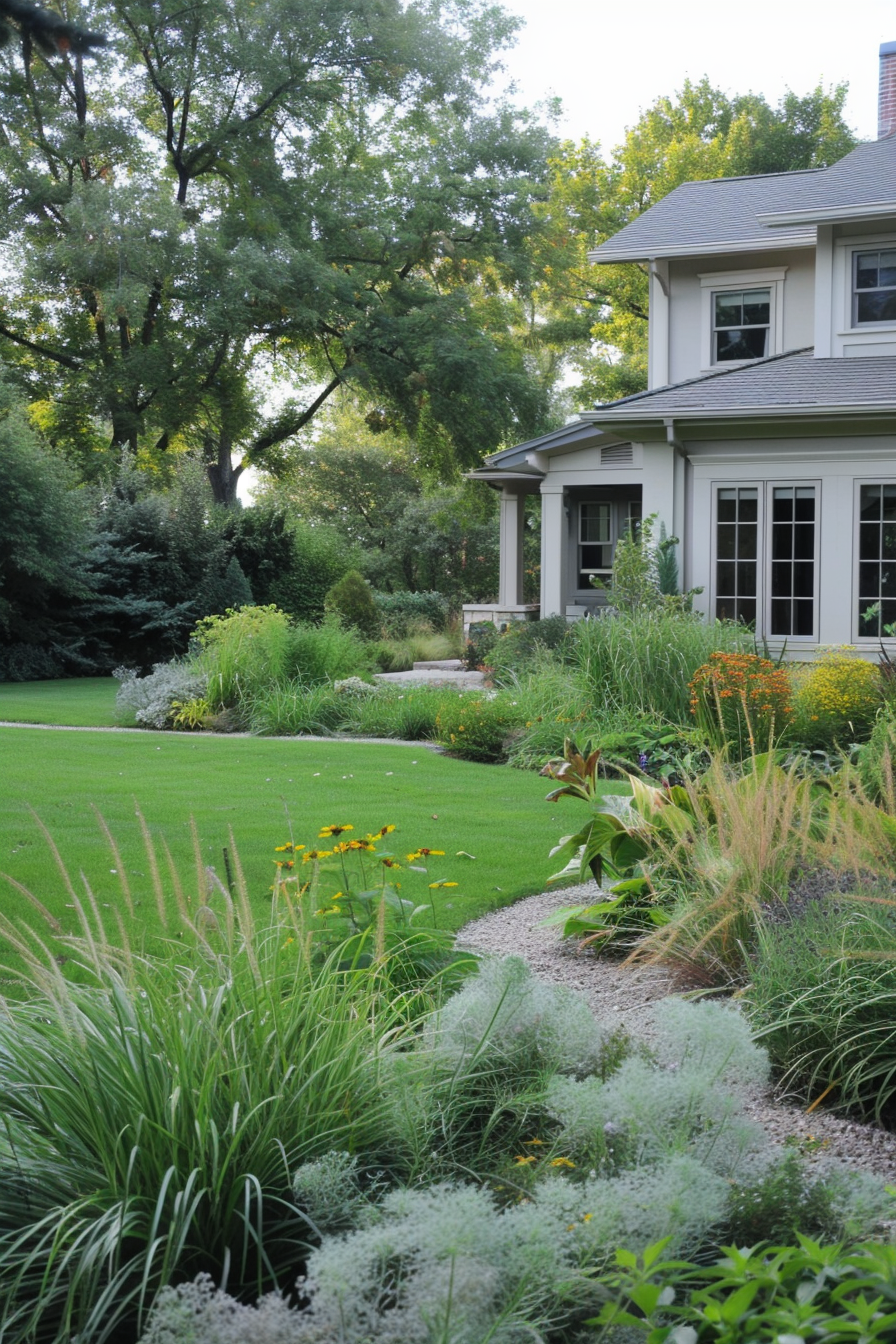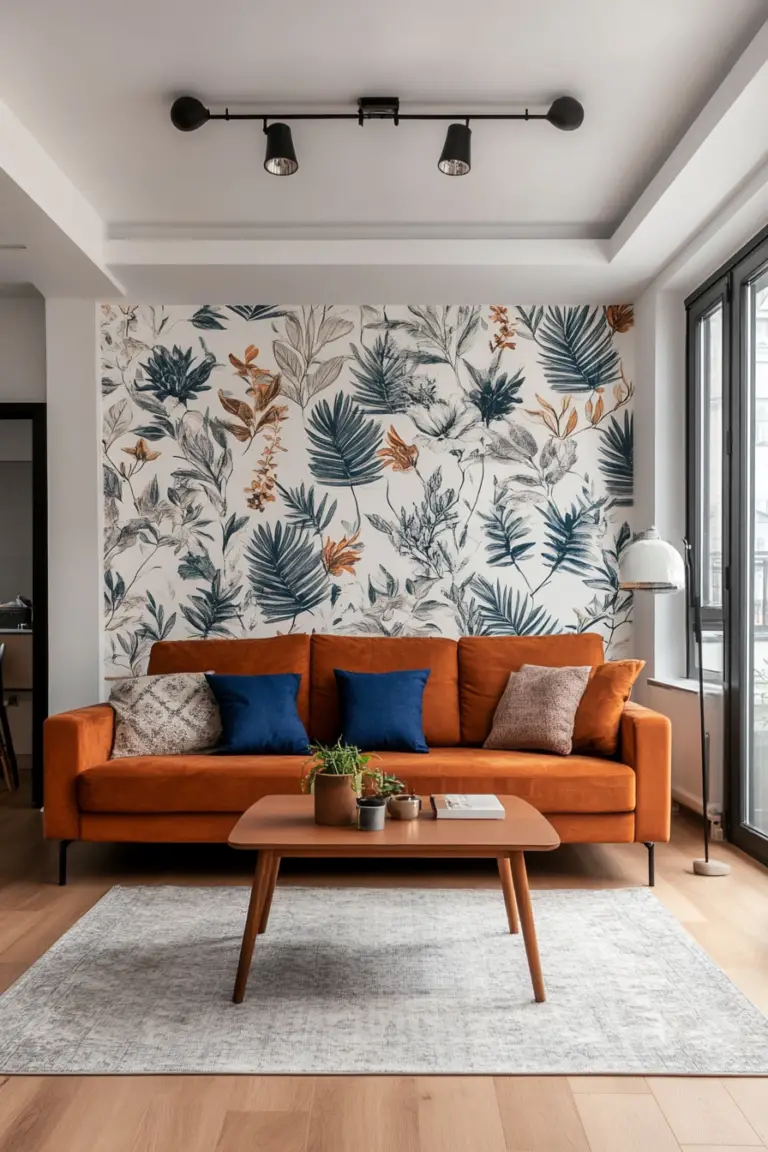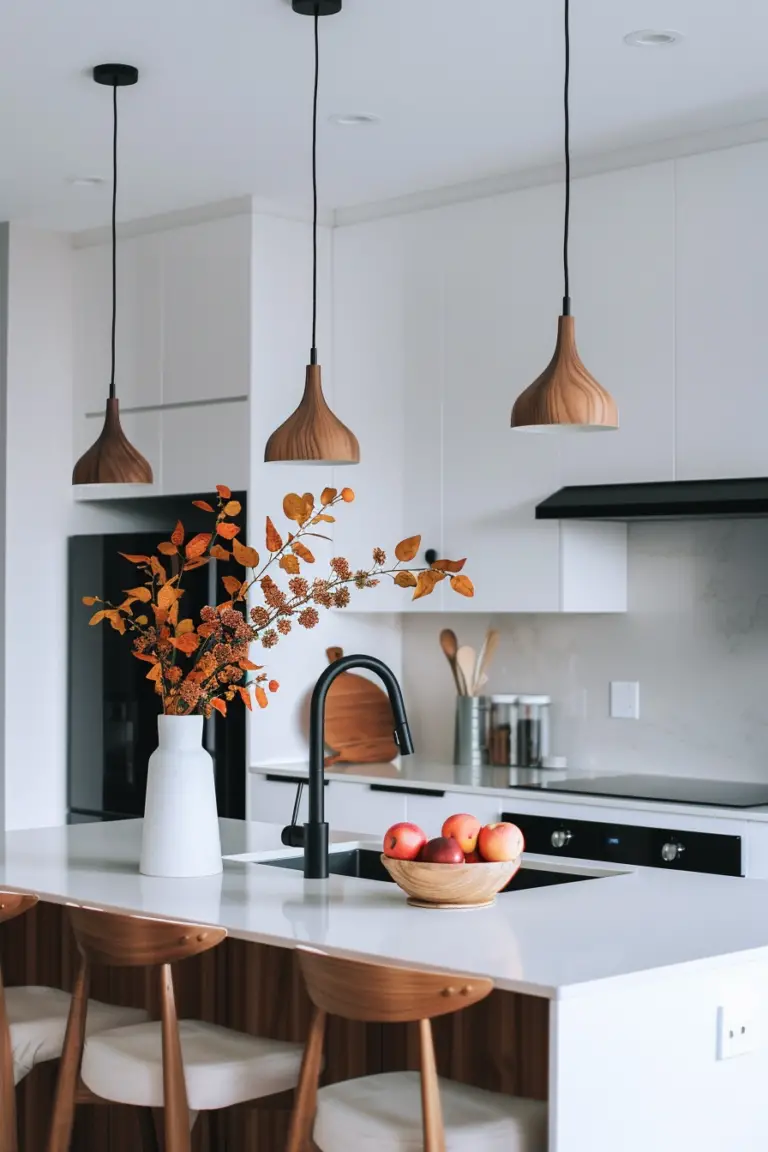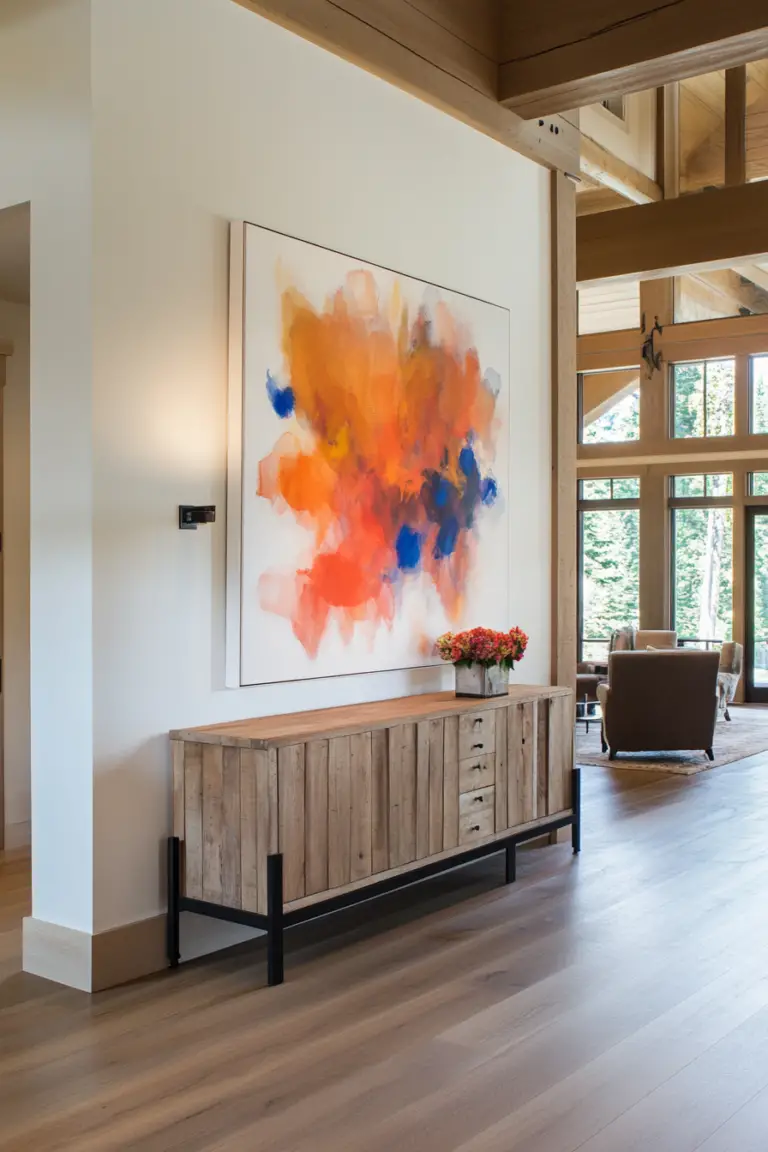Easy Tips for Low Maintenance Landscaping You Can Do Today!
Believe it or not, you don’t need a green thumb or endless free time to have a stunning backyard. Low maintenance landscaping isn’t just for the pros—it’s a game-changer for anyone looking to enjoy a gorgeous outdoor space without constant upkeep. Ready to transform your backyard into an effortless oasis? Let’s dive in!
What Is Low Maintenance Landscaping?
Low maintenance landscaping focuses on creating beautiful outdoor spaces that require minimal care. It’s all about smart plant choices, efficient design, and clever use of materials to reduce the time and effort you spend on yard work. (Yes, you can have your cake and eat it too!)
Key Elements of Low Maintenance Landscaping
1. Drought-Resistant Plants
Opt for native or drought-tolerant plants that thrive in your local climate. These hardy varieties require less watering and are often more resistant to pests.
2. Mulching Magic
Mulch not only suppresses weeds (those pesky invaders!) but also retains soil moisture, reducing the need for frequent watering.
3. Efficient Irrigation
Install drip irrigation systems or soaker hoses to deliver water directly to the roots, saving you time and conserving water.
4. Hardscaping Features
Incorporate elements like stone pathways, gravel beds, or decking to minimize lawn areas and add visual interest without extra maintenance.
5. Minimal Lawn Areas
Lawns are high-maintenance divas. Consider reducing grassy areas or replacing them with ground covers or artificial turf.
Budget-Friendly and DIY Tips
- Get Crafty with Recycled Materials Create borders or planters using reclaimed wood or stones (hello, eco-friendly and free!).
- Swap Out High-Maintenance Plants Replace needy plants with perennials that come back year after year without fuss.
- DIY Mulch Use shredded leaves or grass clippings as a cost-effective mulch alternative.
- Opt for Gravel or Rock Gardens These not only look chic but also require virtually no upkeep.
- Install a Rain Barrel Collect rainwater to nourish your plants (and save on your water bill!).
Tips to Achieve the Low Maintenance Look
- Plan Ahead Sketch out your design to make the most of your space and resources.
- Group Plants Wisely Place plants with similar water and sunlight needs together to simplify care.
- Use Native Plants They’re already adapted to your environment, making them practically self-sufficient.
- Consider Automatic Lighting Solar-powered lights add ambiance without the hassle of wiring or electricity costs.
Quick Tips to Pull It All Together
- Start Small Begin with one area of your yard to avoid feeling overwhelmed.
- Embrace Perennials These plants are the gift that keeps on giving year after year.
- Less Is More A minimalist approach not only looks modern but also reduces maintenance.
- Regular (but Minimal) Upkeep A little weeding or pruning now and then goes a long way.
- Personalize It Add your own touches with garden art or colorful pots to make the space uniquely yours.
1. Minimalist Landscaping
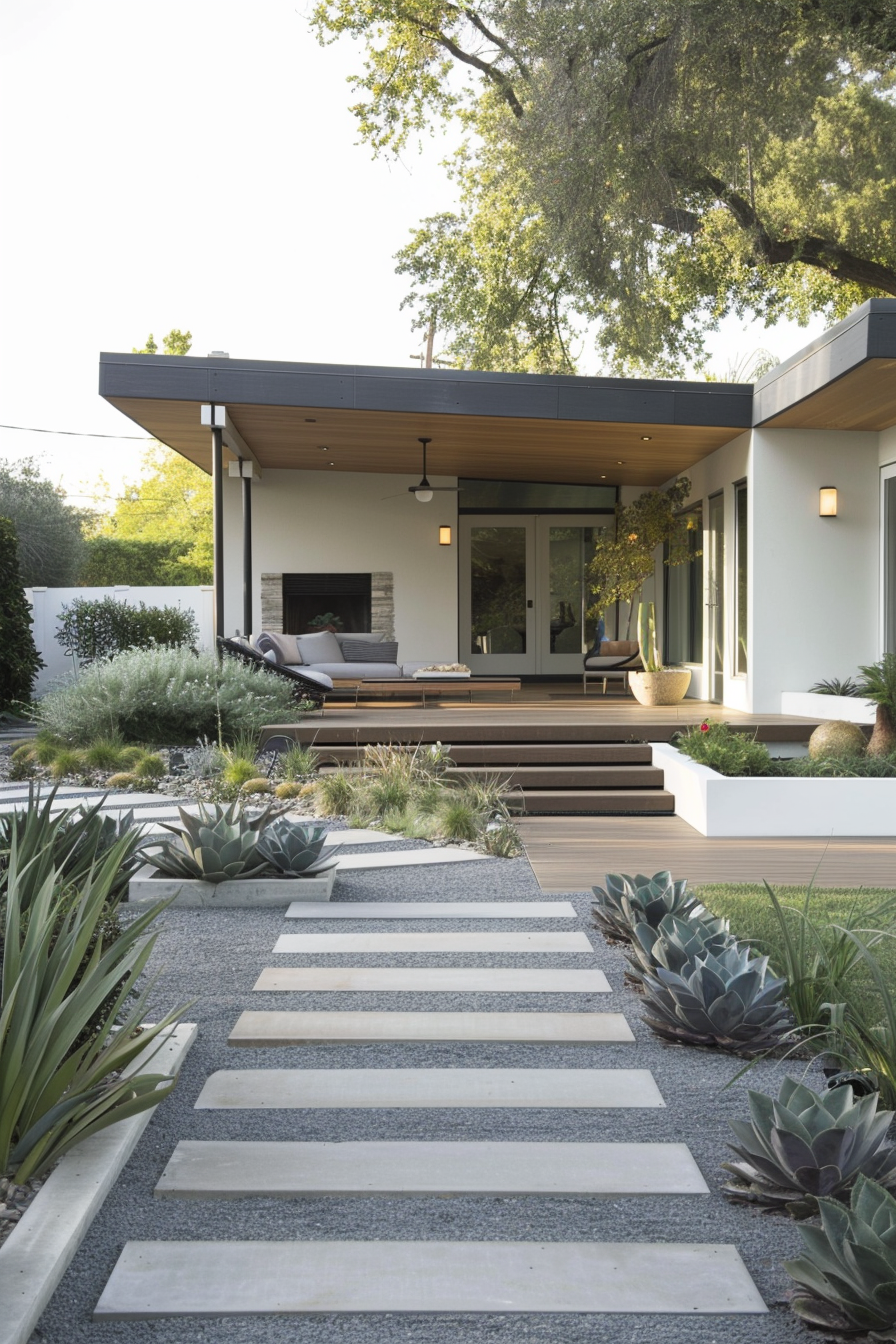
Minimalist landscaping emphasizes simplicity and clean lines, reducing clutter and maintenance. Start with a foundation of neutral tones, such as grey gravel or pale stones, to keep the look cohesive. Incorporate a few statement plants like sculptural succulents or ornamental grasses to add texture and interest without overwhelming the space. Choose plant varieties that thrive in your local climate to minimize the need for watering and upkeep.
In a minimalist garden, less is more. Opt for a limited palette of plant species to create a unified and calming environment. Grouping plants in odd numbers and arranging them asymmetrically can provide visual appeal without seeming overly designed. Use hardscape elements like concrete pavers or wooden decks to define spaces and create pathways, contributing to the minimalist aesthetic.
To maintain the minimalist vibe, keep the color scheme restrained and focus on materials with natural textures. Avoid unnecessary decorations and choose functional furniture with clean lines. Lighting should be subtle, highlighting key features like a sculptural plant or a water feature. This approach not only reduces maintenance but also creates a tranquil, Zen-like atmosphere.
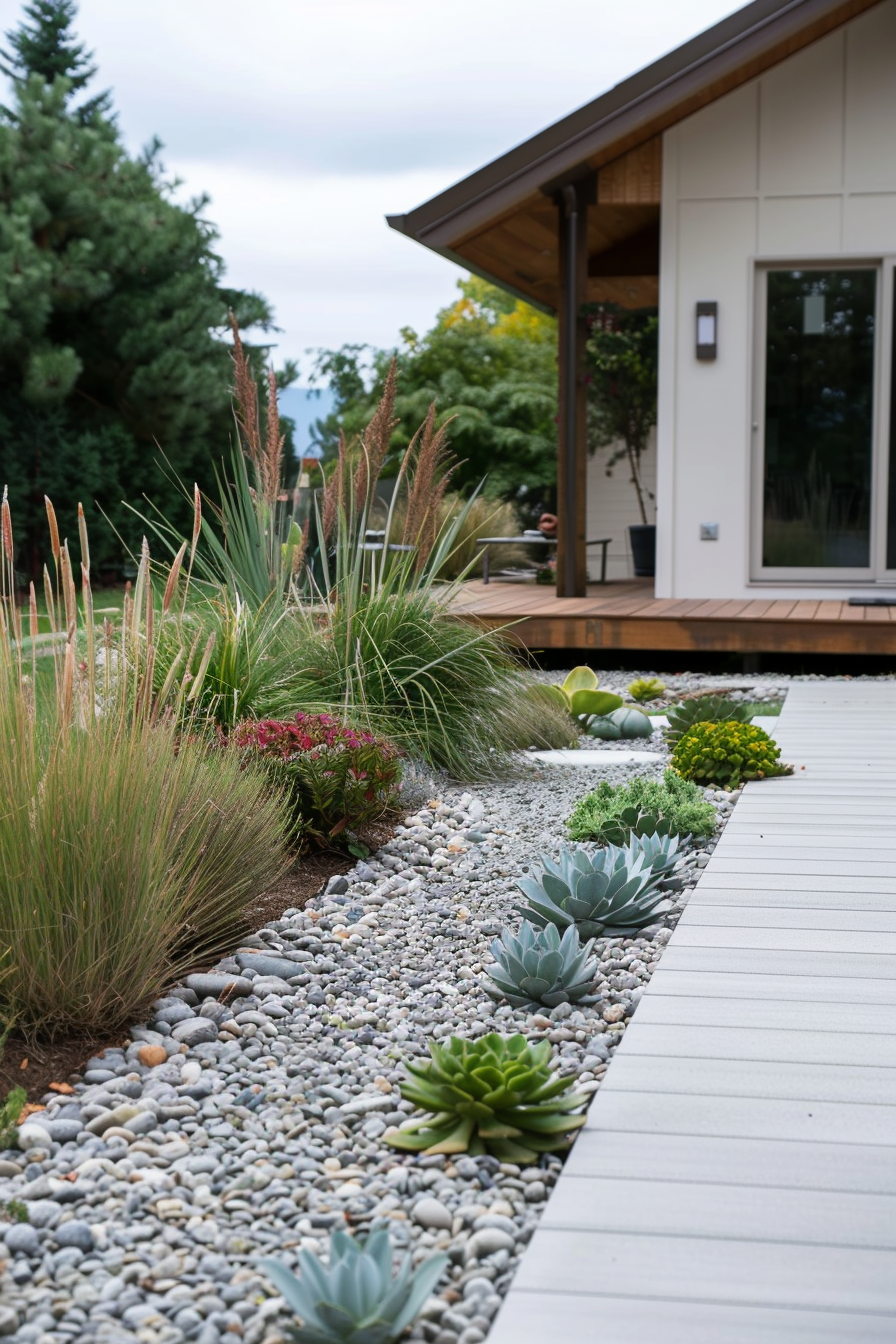
2. Landscaping with Curb Appeal
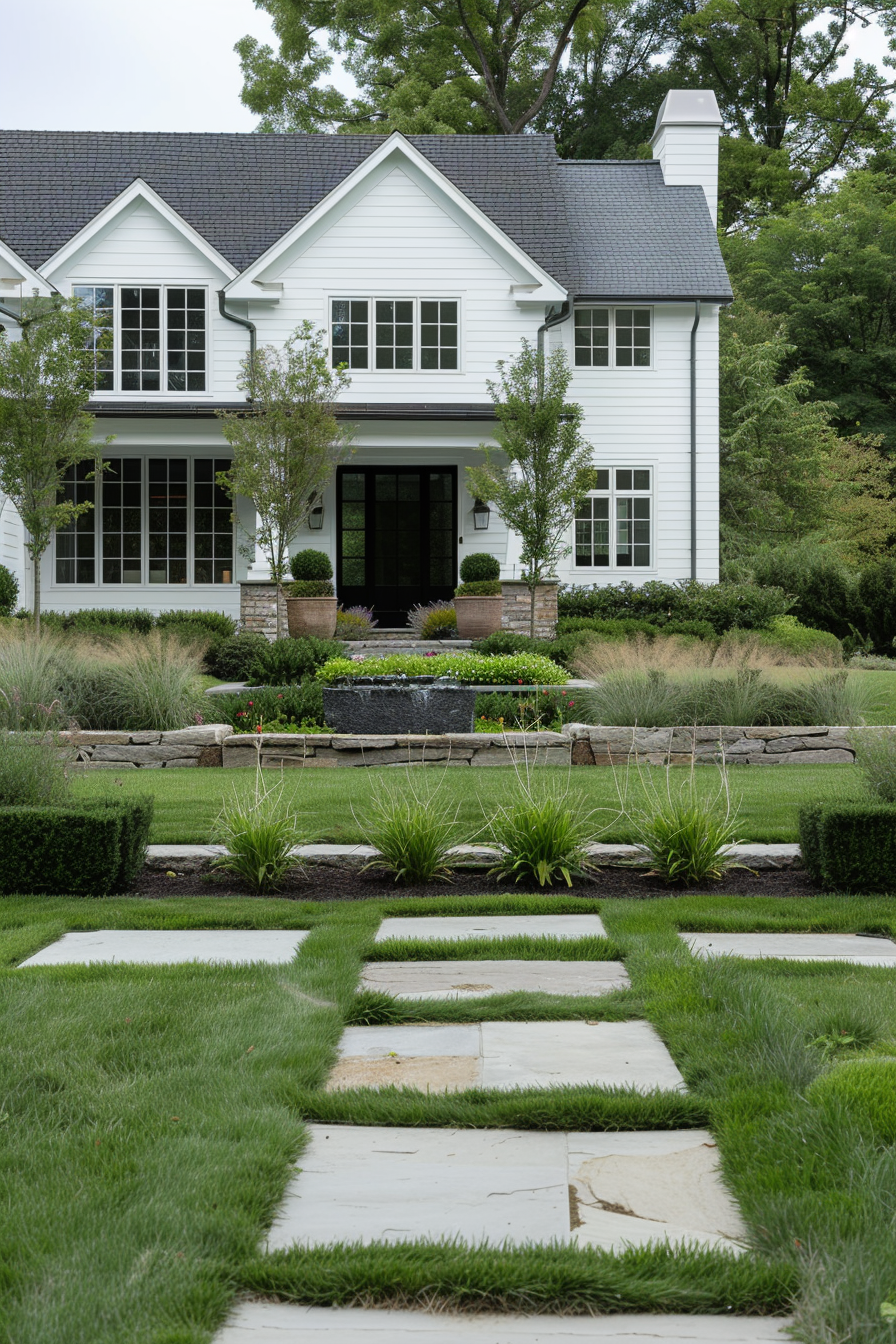
Creating curb appeal doesn’t have to be labor-intensive. Focus on strategic planting and hardscaping to achieve a polished look with minimal effort. Start with a clear, defined pathway to the front door, using materials like brick or natural stone that require little upkeep. Flank the path with low-maintenance plants such as boxwoods or ornamental grasses that provide structure and greenery year-round.
Incorporate a focal point like a stylish planter or a small water feature near the entrance to draw the eye and add interest. Choose native plants that thrive in your region’s climate, reducing the need for frequent watering or special care. Adding a few flowering perennials can provide seasonal color with minimal effort, enhancing the home’s exterior without constant maintenance.
Keep the design simple by limiting the variety of plants and opting for those that require little pruning or special attention. Use mulch to suppress weeds and retain soil moisture, cutting down on both weeding and watering. Finish the look with well-placed outdoor lighting to highlight key features and enhance safety, creating an inviting and sophisticated entrance with minimal upkeep.
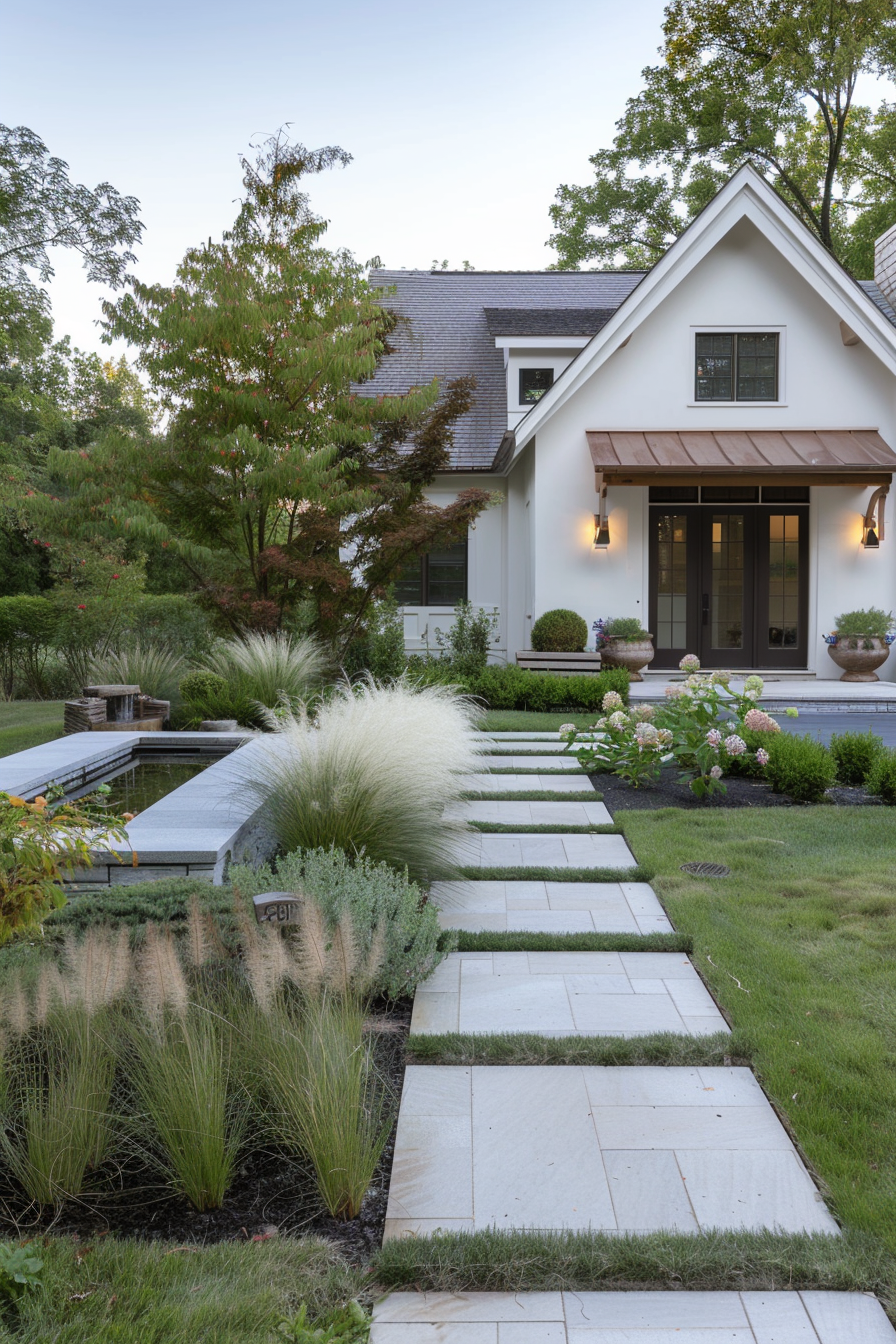
3. Modern Landscaping
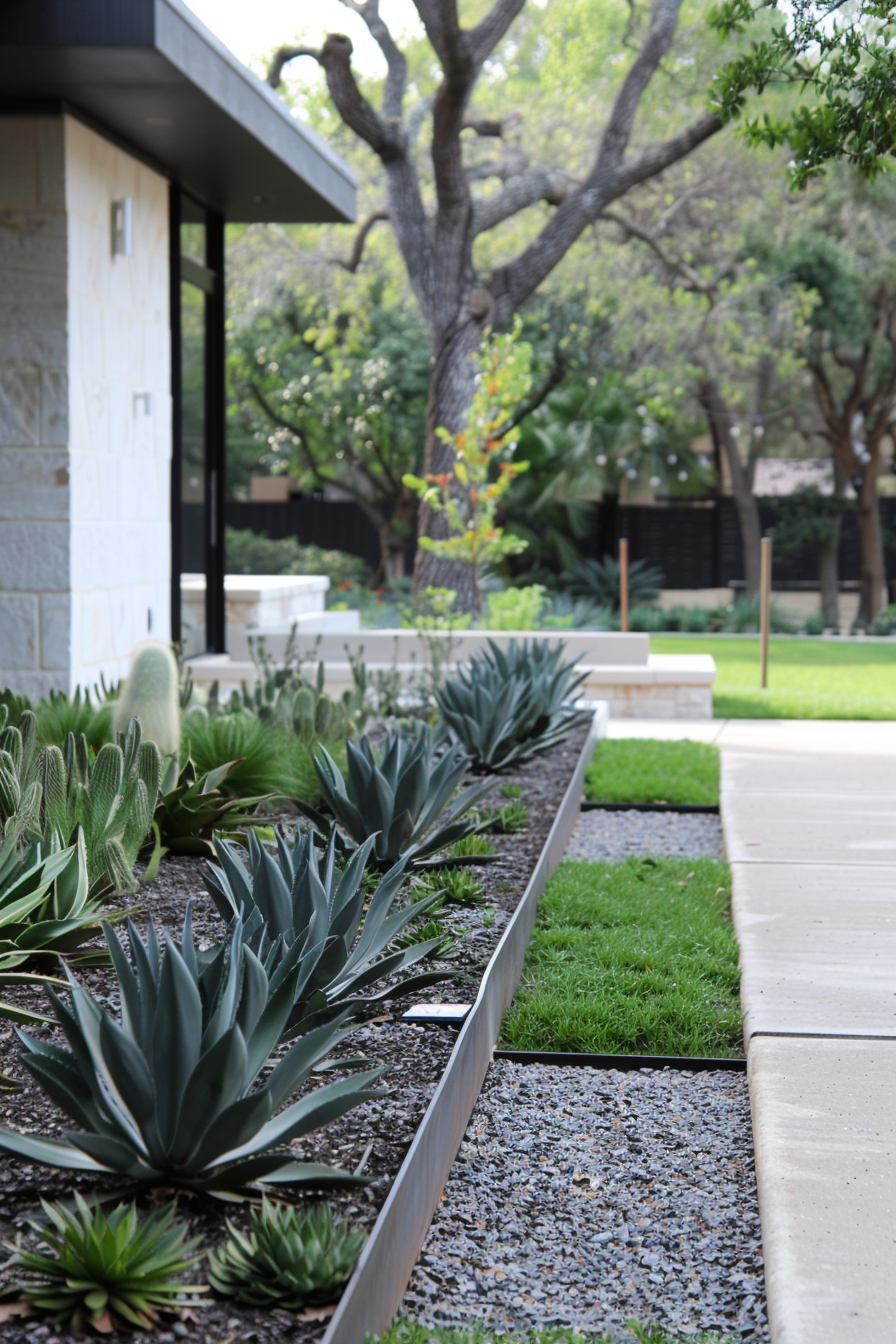
Modern landscaping focuses on clean lines, geometric shapes, and a blend of natural and man-made materials. Begin with a structured layout using elements like concrete or steel edging to define spaces and create a sleek, contemporary look. Incorporate hardscaping features such as a patio or a retaining wall with smooth finishes to add sophistication and low-maintenance functionality.
Plants in a modern landscape are often selected for their architectural qualities. Choose varieties like agaves, yuccas, or ornamental grasses that offer striking forms and require minimal care. Grouping plants in structured patterns or rows can enhance the modern aesthetic, while the use of monochromatic or contrasting colors can add visual interest.
Simplicity and symmetry are key in modern design. Use mulch or gravel to cover ground areas and reduce the need for mowing and weeding. Incorporate minimalist outdoor furniture and lighting to complement the sleek lines and maintain a clean, uncluttered look. This approach not only simplifies maintenance but also creates a visually cohesive and stylish outdoor space.
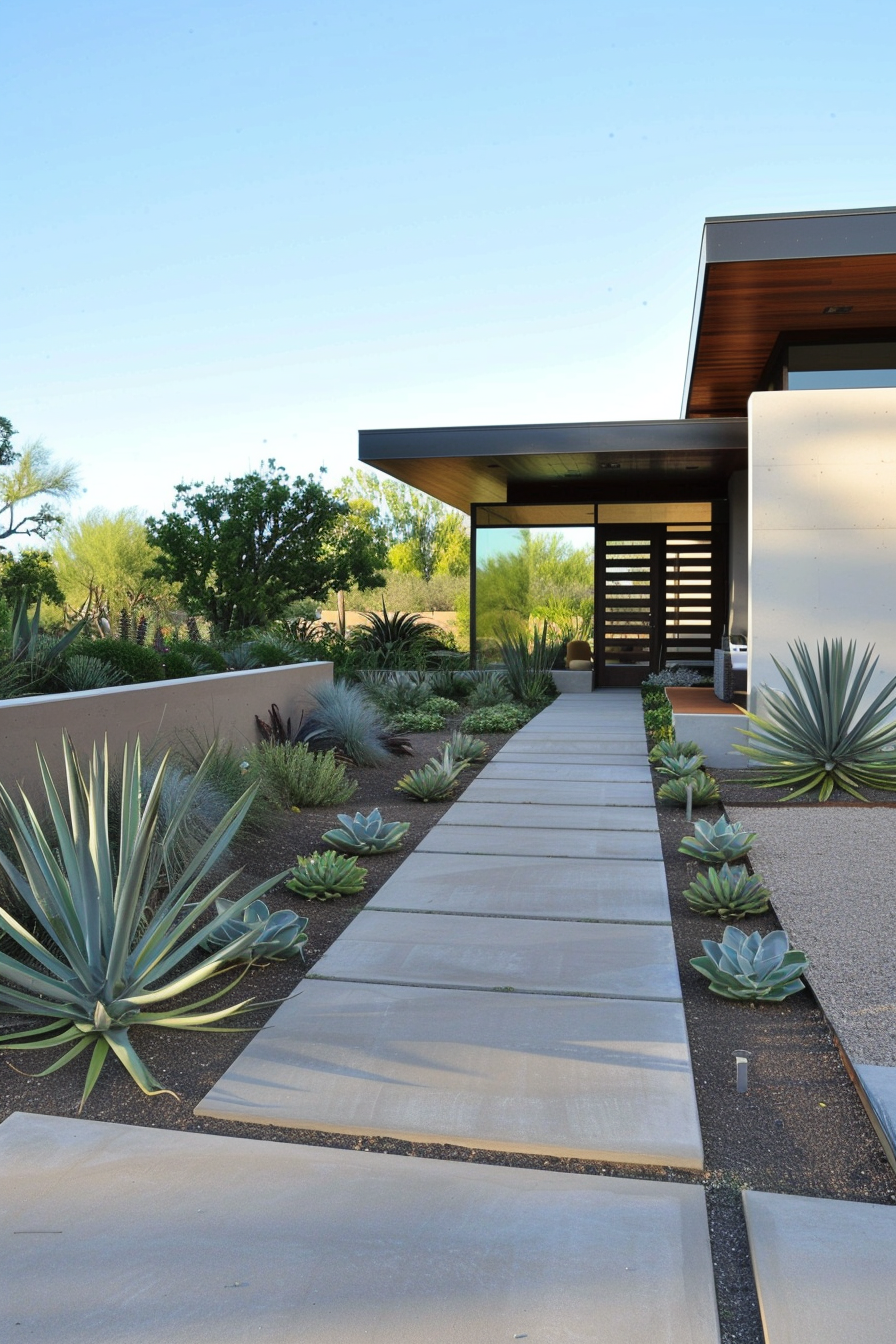
4. Low Maintenance Landscaping for the Midwest
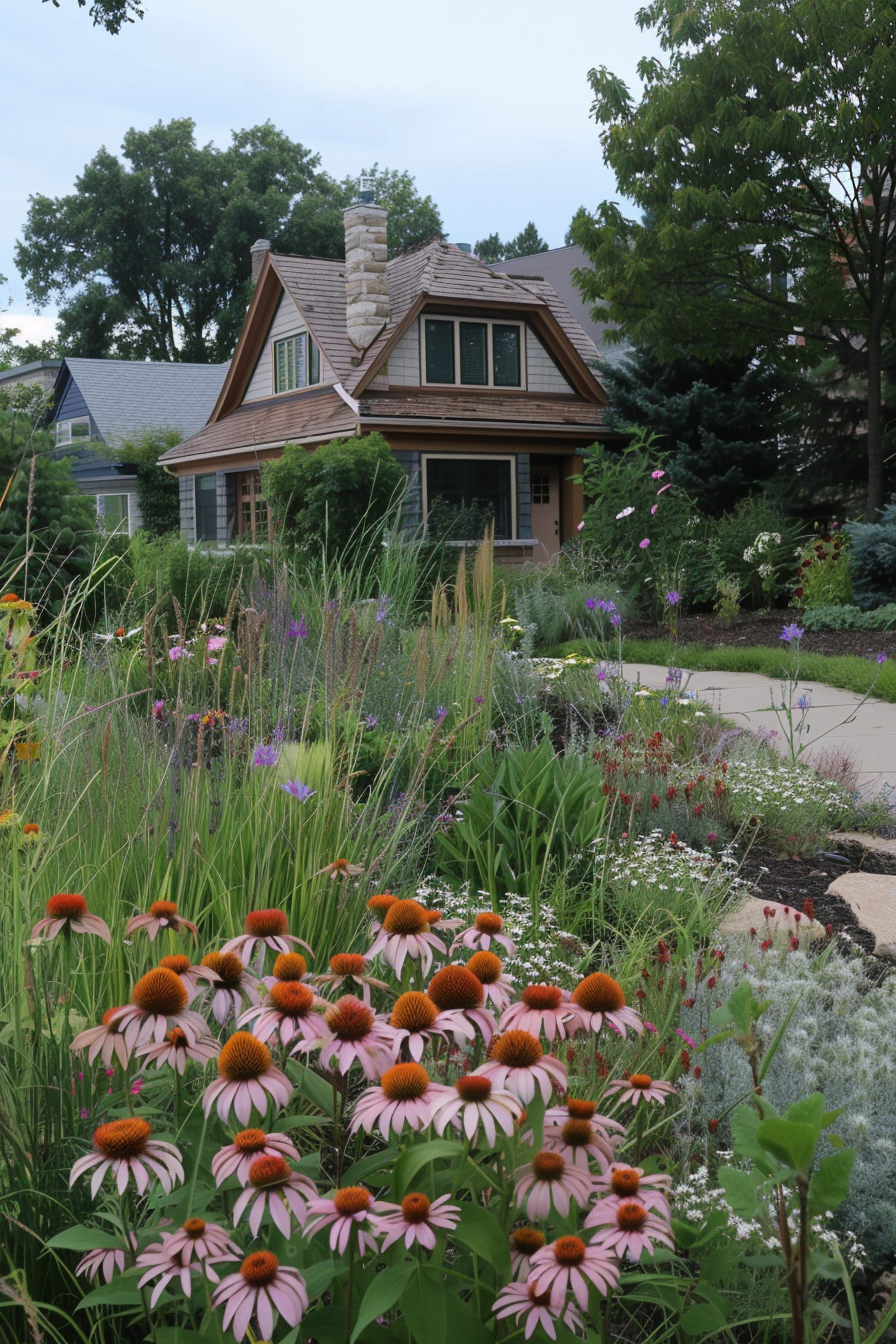
The Midwest’s diverse climate requires a landscaping approach that can handle hot summers, cold winters, and everything in between. Start by selecting hardy, native plants that are well-suited to these conditions, such as coneflowers, sedums, or prairie grasses. These plants are adapted to local weather patterns and often require less water and care.
To reduce upkeep, consider using ground covers like clover or creeping thyme instead of traditional turf grass. These options are not only attractive but also more drought-tolerant and less demanding in terms of mowing and fertilizing. Incorporate mulch around plants to help retain moisture and keep weeds at bay, further reducing maintenance tasks.
Design your Midwest landscape with seasonality in mind. Use plants that provide interest throughout the year, such as evergreens for winter structure and perennials that bloom in spring and summer. Consider adding elements like a rain garden or a permeable paver patio to manage stormwater and prevent flooding, making your landscape not only beautiful but also environmentally friendly and low-maintenance.
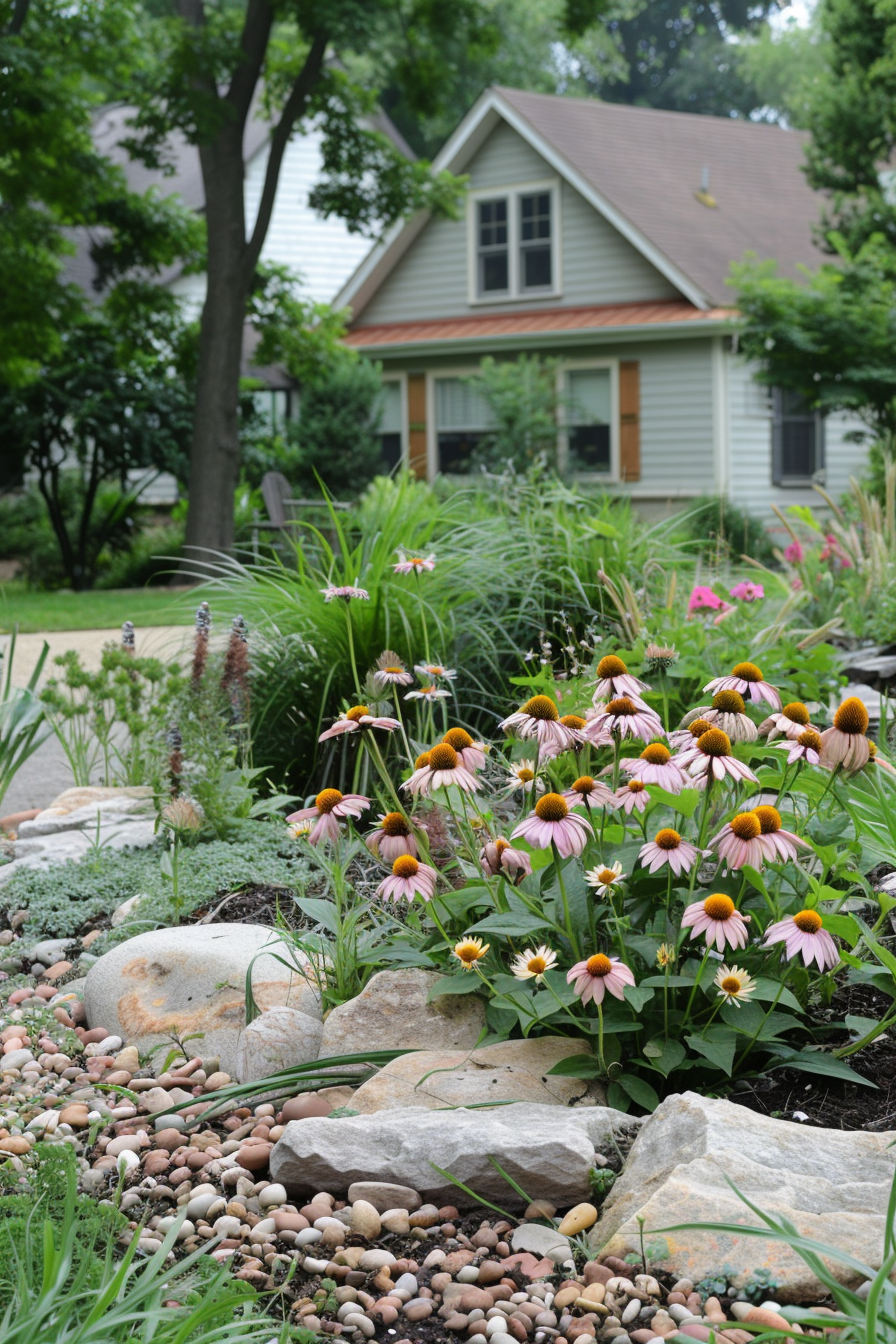
5. Low Maintenance Landscaping for Florida
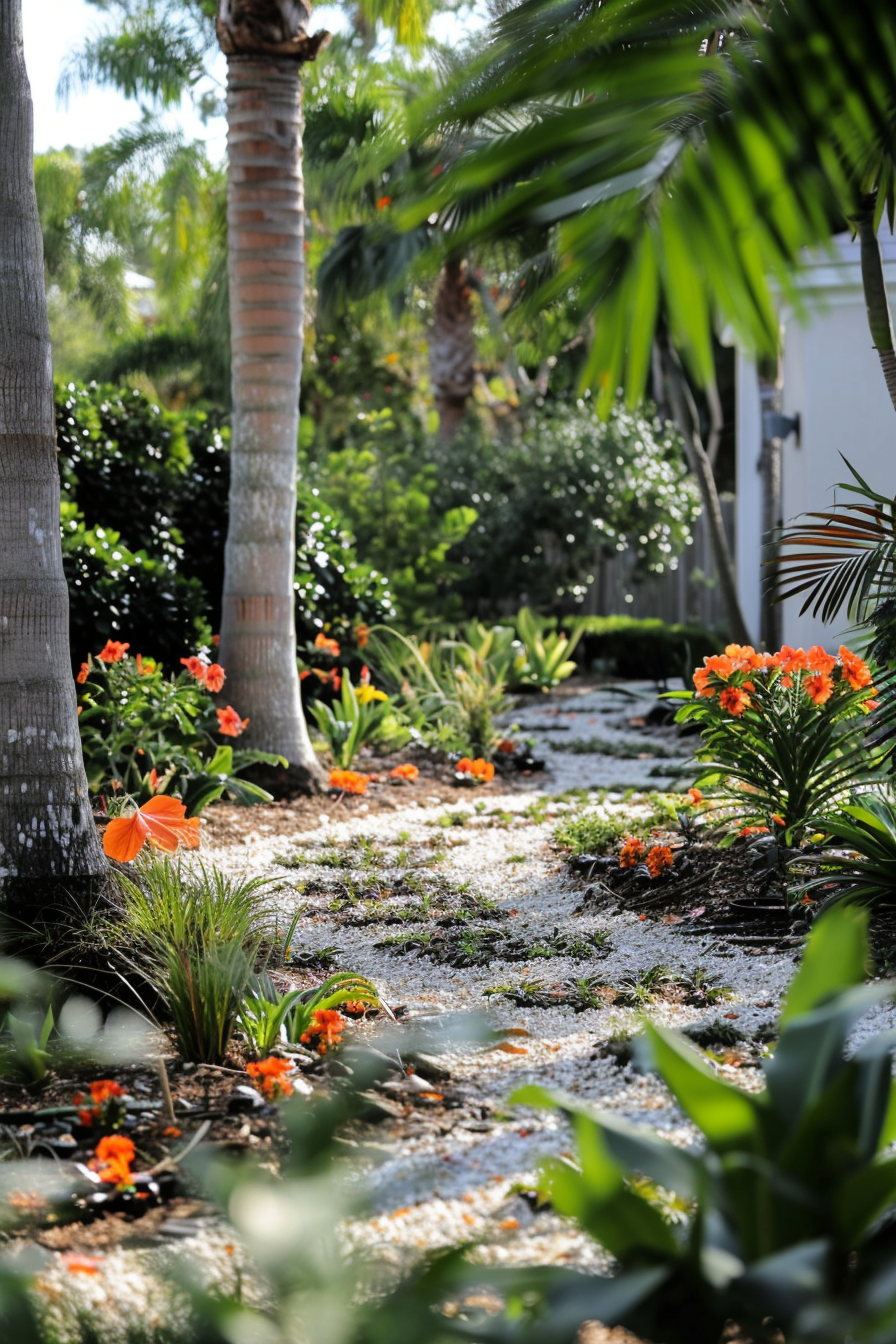
Florida’s warm climate and frequent rainstorms call for a landscape that thrives in heat and humidity. Begin with drought-tolerant and salt-resistant plants like hibiscus, crotons, and palms that can handle the local conditions with minimal care. Incorporate plants that are native to Florida, as they are typically well-adapted to the region’s environment and require less watering and fertilizing.
To manage the abundant rainfall, consider using gravel or stone in place of mulch, which can wash away during heavy storms. Design your landscape to include raised beds or planters that provide good drainage and protect plant roots from standing water. Using a drip irrigation system can help deliver water directly to the plants’ roots, reducing evaporation and water waste.
Create a lush, tropical feel with layers of vegetation, but keep it simple with a limited palette of plants that don’t require frequent pruning or pest control. Use pavers or stepping stones to create paths and reduce the need for lawn maintenance. By focusing on resilient plants and thoughtful design, you can enjoy a vibrant and low-maintenance Florida landscape year-round.
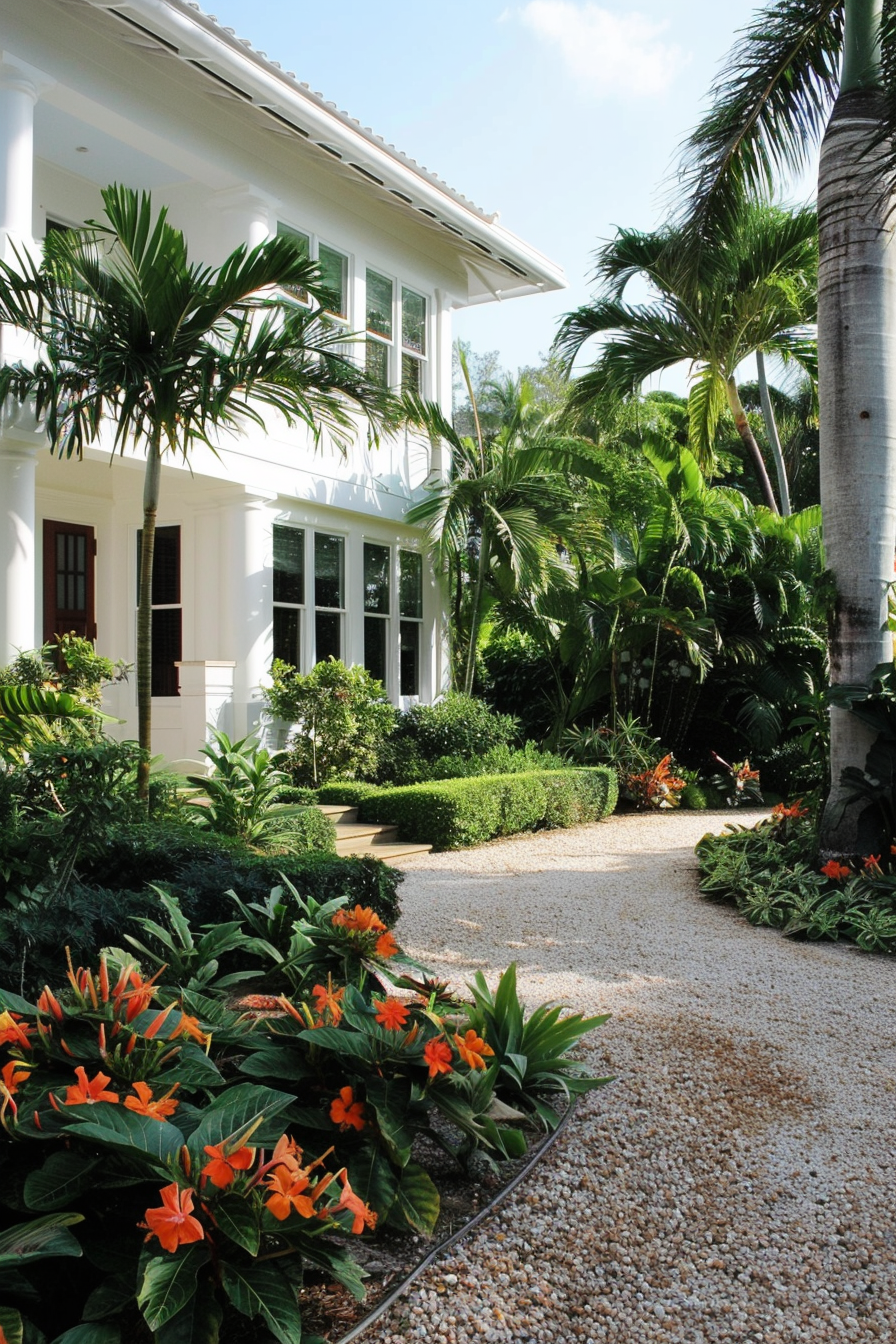
6. Low Maintenance Landscaping for Australia
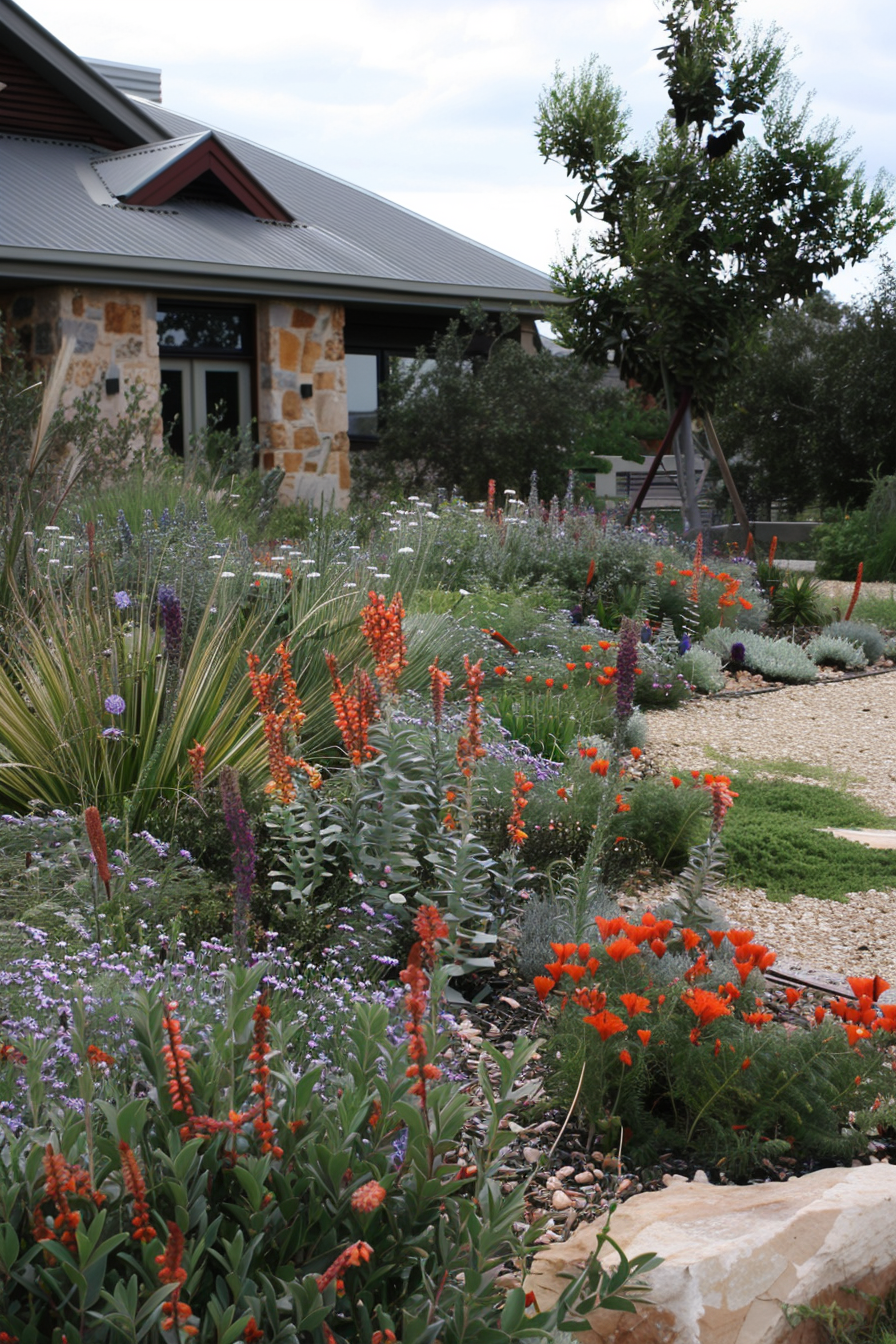
Australia’s diverse climate demands a versatile approach to landscaping. Start with native plants like kangaroo paw, bottlebrush, or grevillea that thrive in the local environment and require less water and care. These plants are adapted to Australia’s conditions and provide vibrant colors and textures without the need for extensive maintenance.
To cope with the hot, dry climate, consider replacing traditional lawns with drought-resistant ground covers like blue fescue or creeping boobialla. These alternatives are more resilient and require less mowing and watering. Mulching is crucial in Australian landscapes to retain soil moisture and suppress weeds, so use a thick layer of organic mulch around plants.
Incorporate hardscape elements like gravel paths or stone patios to reduce the amount of water-dependent greenery. Use water-saving techniques such as rainwater tanks or greywater systems to keep your plants hydrated sustainably. By focusing on native and drought-tolerant species and efficient water use, you can create a beautiful, low-maintenance garden suited to Australia’s unique climate.
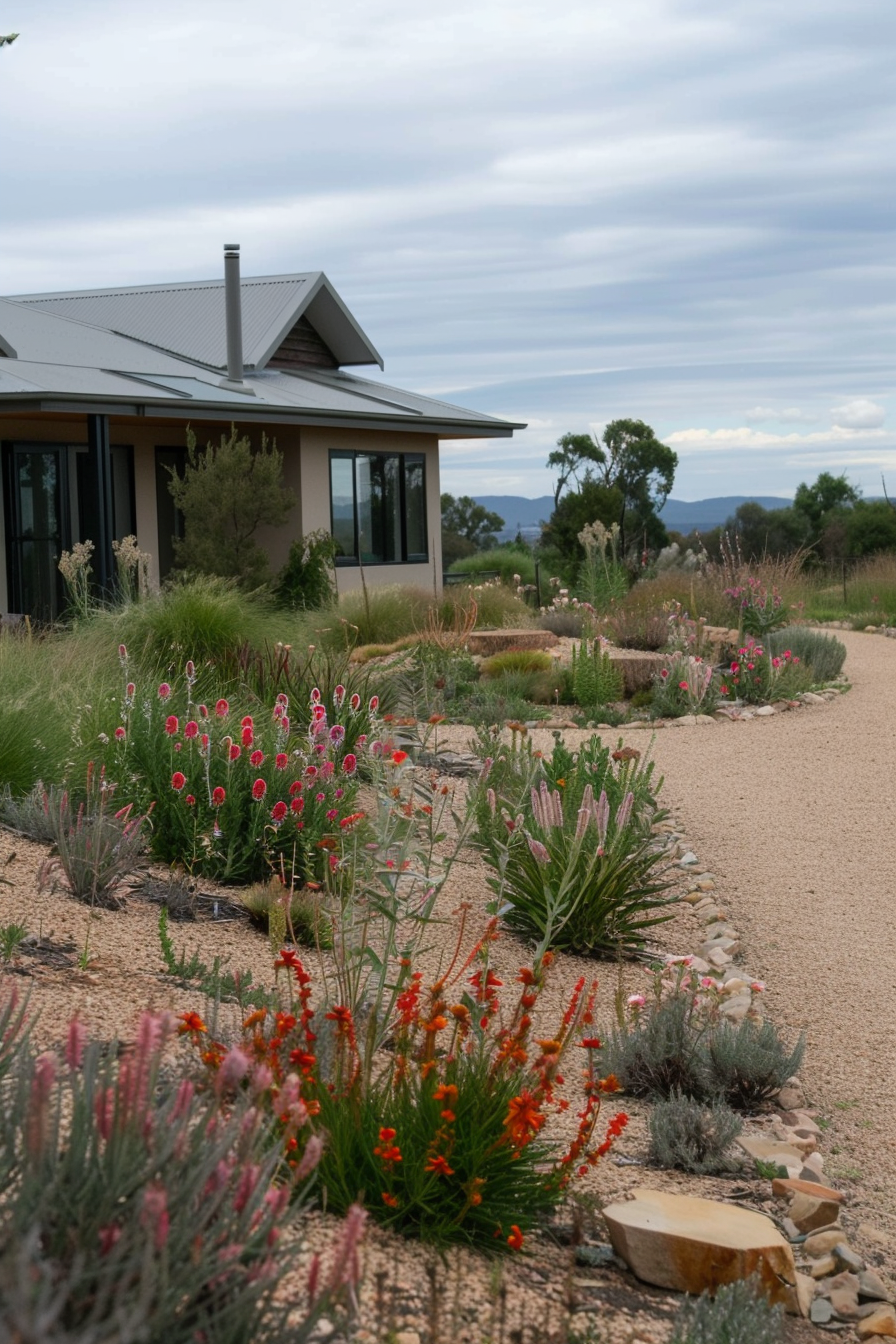
7. Low Maintenance Landscaping for Canada
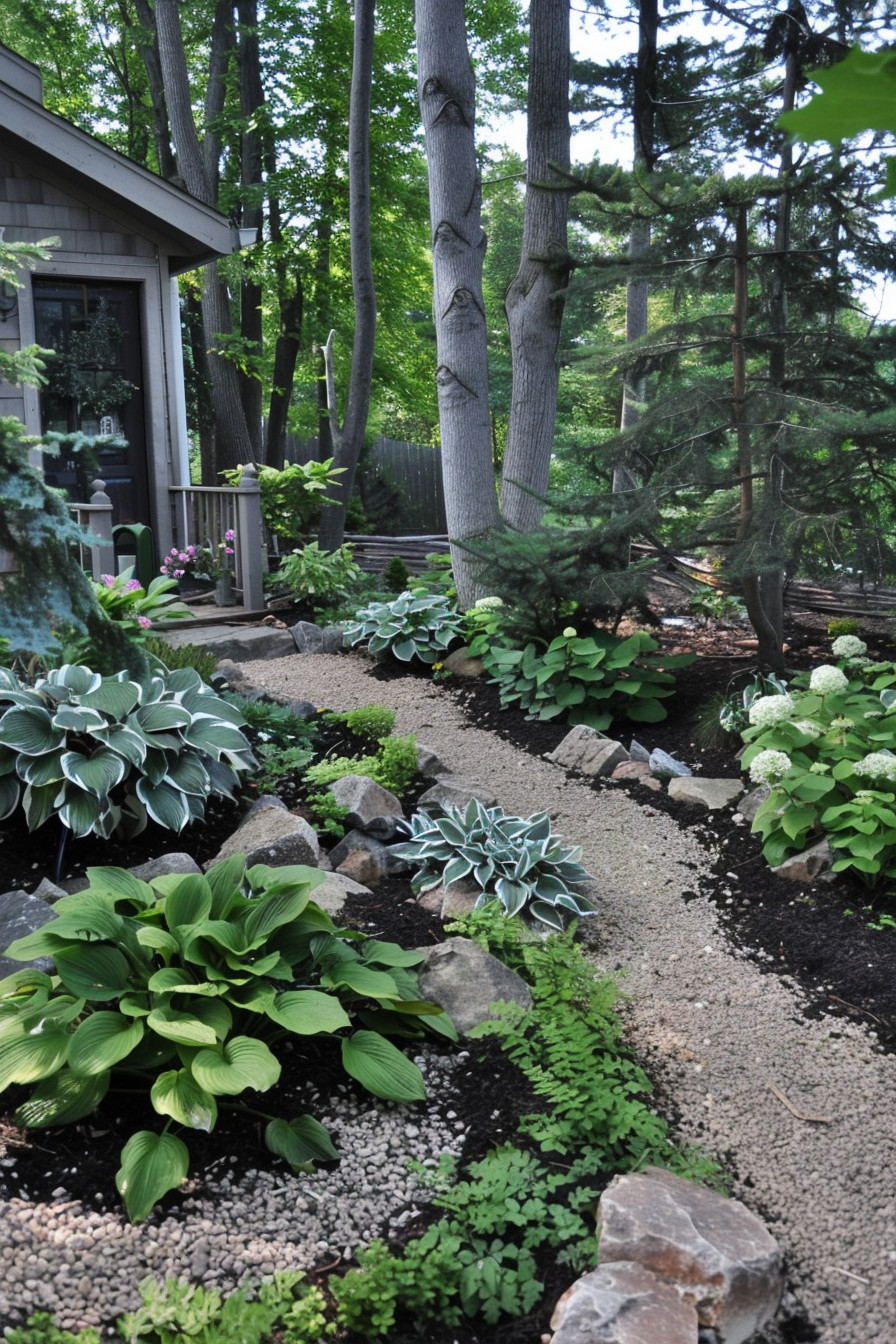
Canada’s varied climate, from harsh winters to hot summers, requires a robust and adaptable landscape design. Start with cold-hardy and low-maintenance plants such as hostas, daylilies, and conifers that can survive the extremes and provide year-round interest. These plants are well-suited to the Canadian climate and need minimal care once established.
Opt for hardy ground covers like creeping juniper or thyme that can endure the cold and reduce the need for mowing. Using mulch around plantings will help protect roots from frost and retain moisture during the warmer months. Consider installing raised beds or containers to elevate delicate plants above the snow line, making them easier to manage.
Design your landscape with all four seasons in mind. Choose plants that offer seasonal interest, such as evergreens for winter structure and flowering shrubs for spring and summer color. Incorporate elements like stone pathways or gravel areas to reduce the need for turf maintenance and provide year-round accessibility. By selecting resilient plants and thoughtful design elements, you can enjoy a low-maintenance garden throughout the year in Canada.
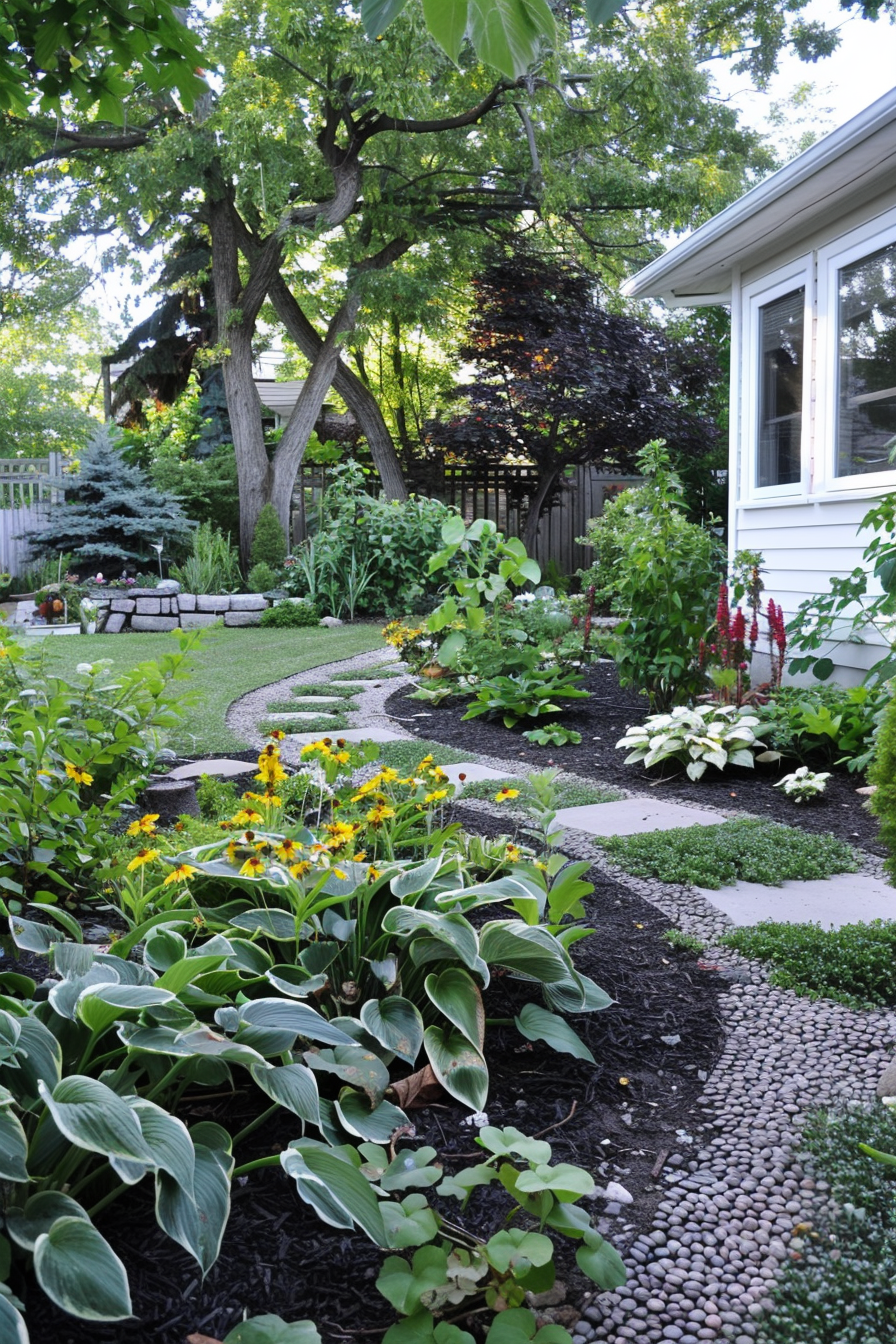
8. Low Maintenance Landscaping for the UK
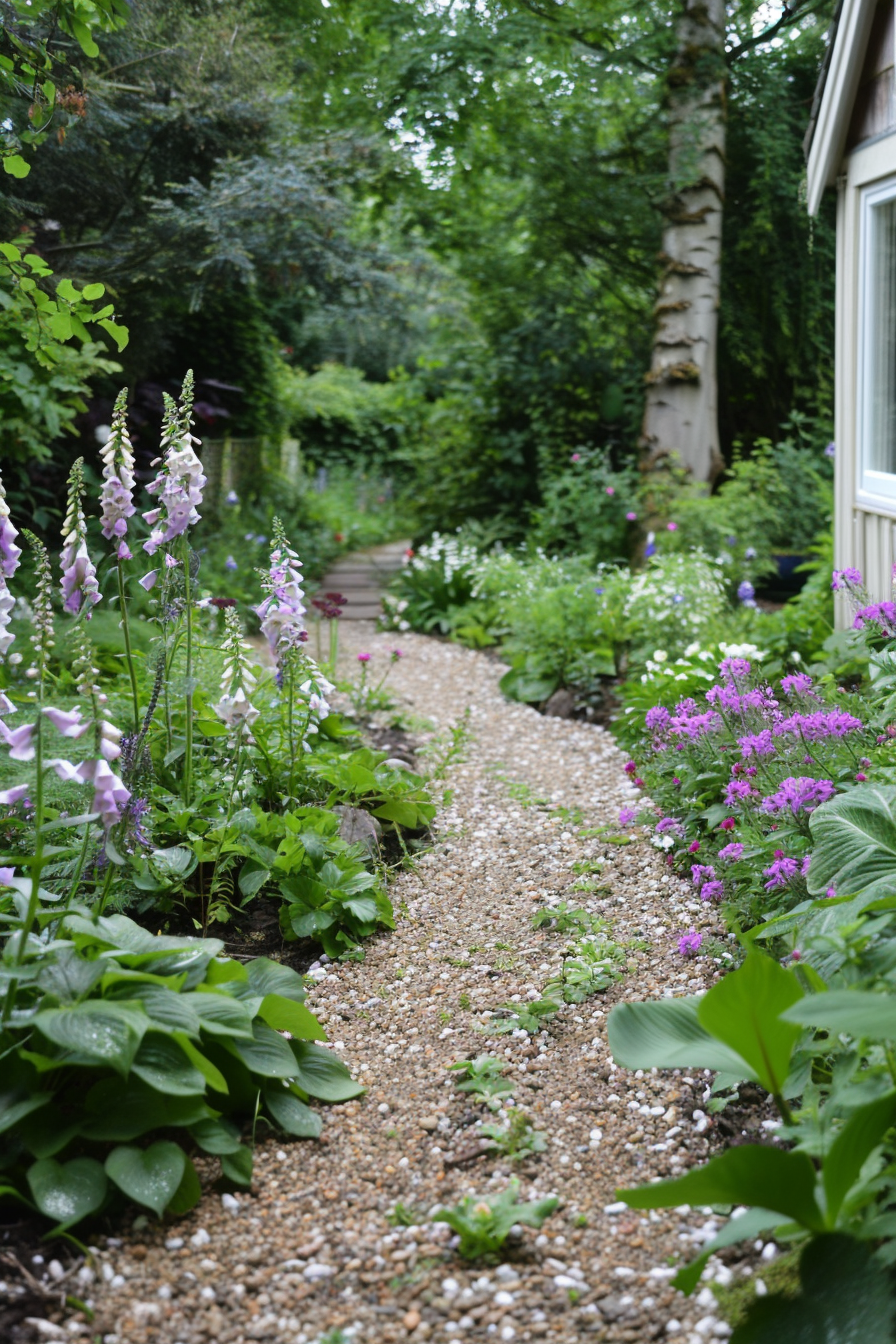
The UK’s temperate climate supports a wide variety of plants, making it easy to create a lush, low-maintenance garden. Start with native plants like foxgloves, bluebells, and ferns that thrive in the local environment and require less attention. These plants are accustomed to the UK’s weather patterns and can provide color and texture throughout the year.
To reduce lawn care, consider using ground covers like moss or creeping thyme that suit the damp climate and require little mowing. Mulching with organic materials can help suppress weeds and retain soil moisture, cutting down on both weeding and watering. Incorporate gravel paths or stone patios to minimize the need for grass and provide easy access throughout the garden.
Design your UK landscape with a focus on perennial plants and shrubs that need minimal pruning. Choose varieties that offer year-round interest, such as evergreens or ornamental grasses, to keep your garden looking vibrant without constant upkeep. Use raised beds or containers to make plant care easier and add a touch of structure to your landscape. This approach ensures a beautiful, low-maintenance garden that thrives in the UK’s climate.
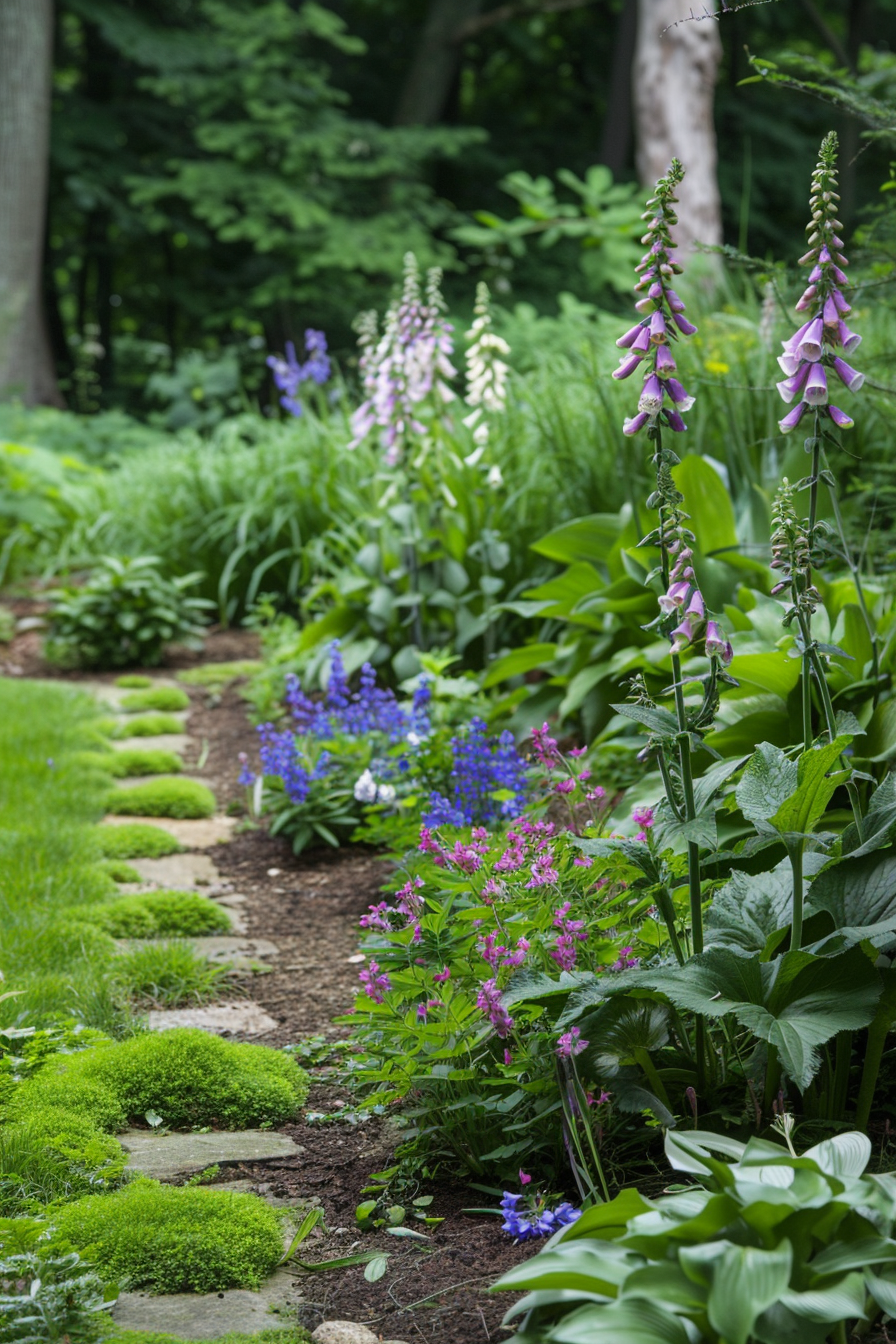
9. Incorporating Grass in Low Maintenance Landscaping
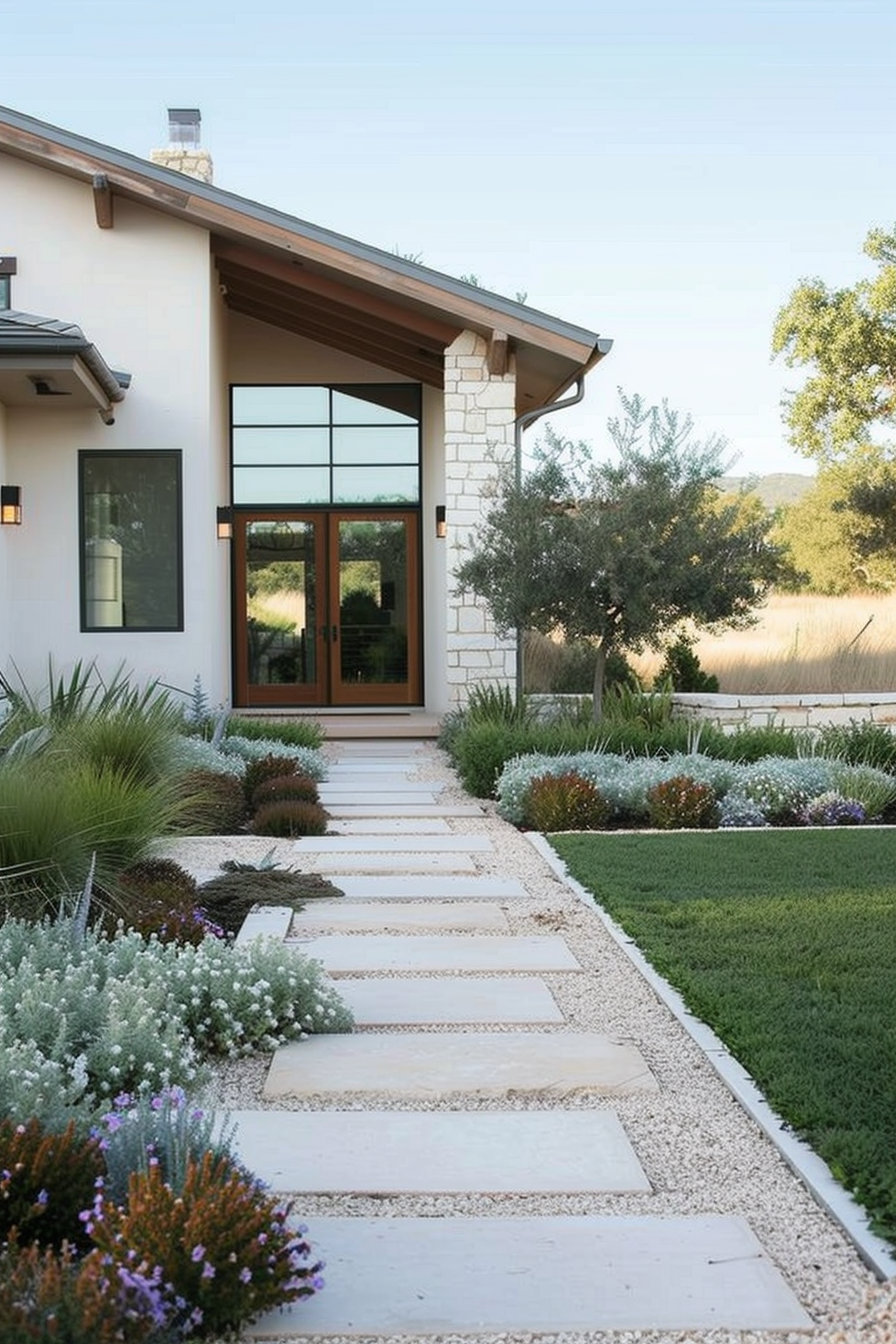
Incorporating grass into a low-maintenance landscape can be achieved by choosing the right type of grass and reducing the overall lawn area. Opt for slow-growing, drought-tolerant grasses such as buffalo grass or zoysia, which require less mowing and watering. These varieties can withstand periods of dryness and recover quickly, making them ideal for low-maintenance lawns.
Minimize the amount of grass in your yard by creating defined planting beds and using hardscape elements like gravel or pavers. This approach not only reduces the need for lawn care but also adds visual interest and structure to your landscape. Incorporating ground covers like clover or creeping thyme in between lawn areas can further reduce maintenance and provide a lush, green appearance.
Regularly aerate and top-dress your lawn to improve soil health and reduce the need for fertilization. Use organic fertilizers and apply them sparingly to encourage deep root growth and reduce watering needs. By choosing the right grass varieties and strategically reducing lawn areas, you can enjoy a beautiful, low-maintenance landscape that incorporates the lushness of grass without the high upkeep.
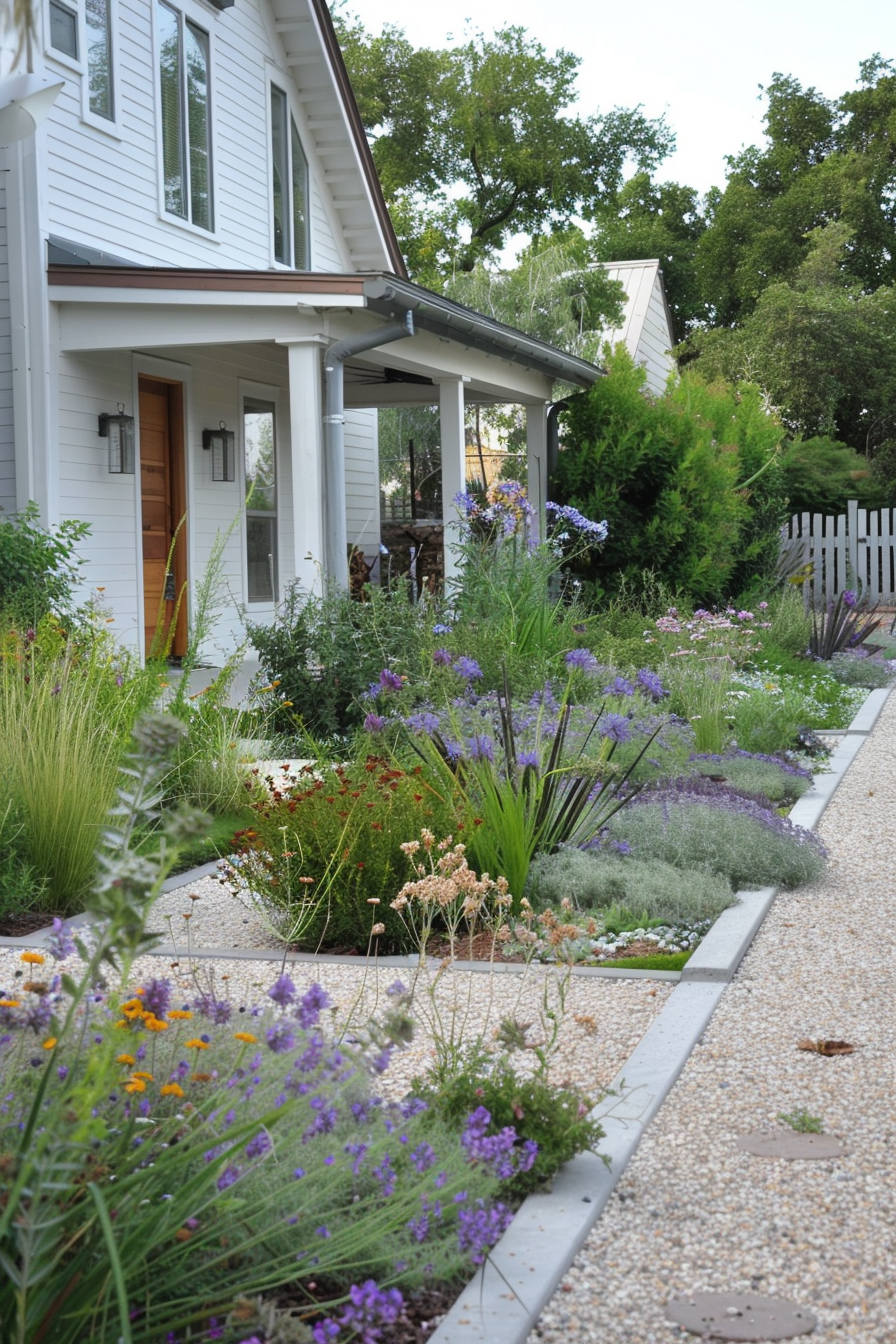
10. Easy Shrubs for Low Maintenance Landscaping
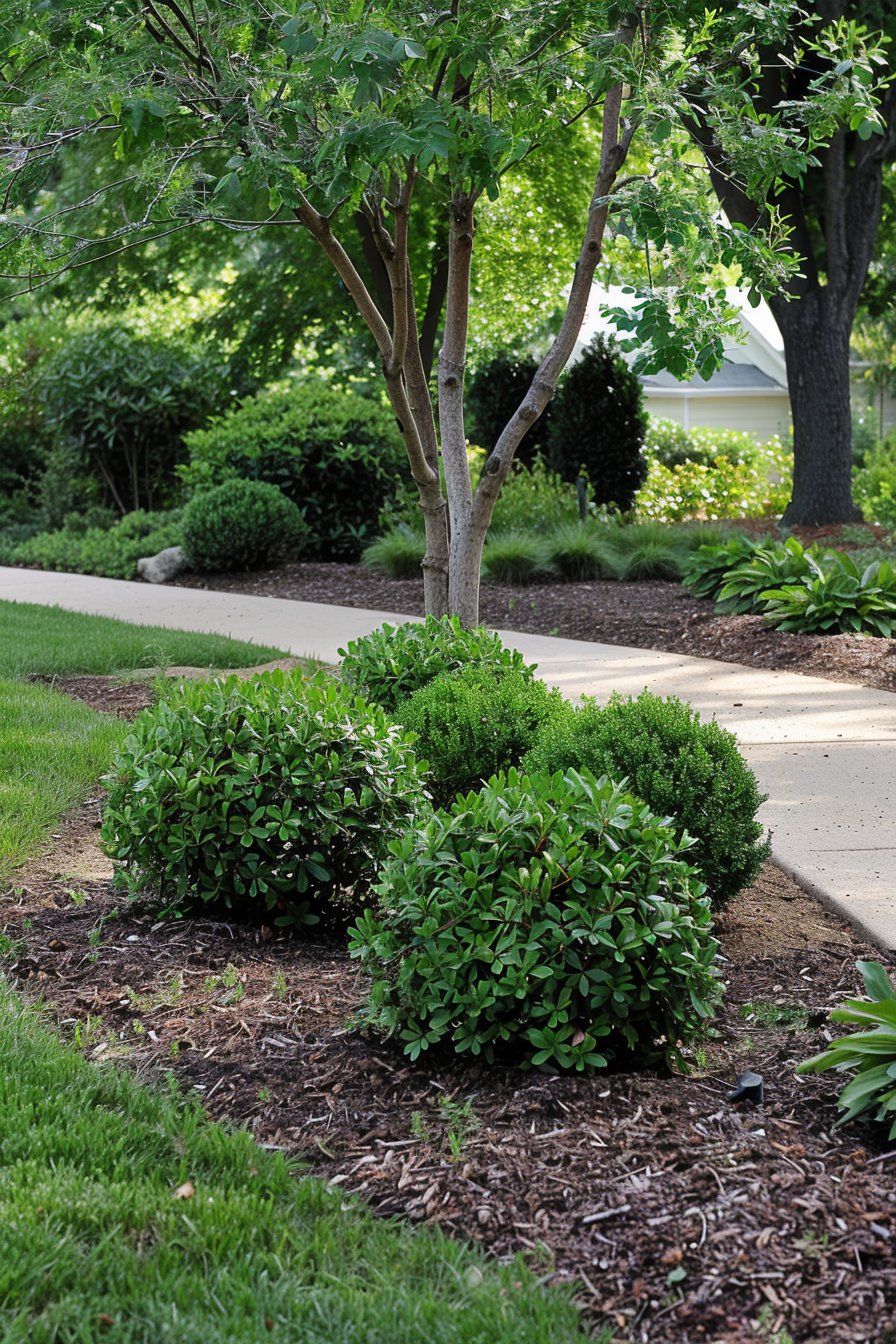
Choosing the right shrubs can significantly reduce the maintenance required in your landscape. Look for varieties that are hardy, drought-tolerant, and require minimal pruning. Shrubs like boxwoods, junipers, and spireas are excellent choices, as they provide structure and greenery throughout the year with little care.
Incorporate evergreen shrubs into your landscape to ensure year-round interest and reduce the need for seasonal planting. These shrubs maintain their foliage in winter, providing color and texture even in the colder months. Use them to create natural borders or focal points in your garden, enhancing the overall design without adding to your maintenance workload.
When planting shrubs, consider using mulch to help retain soil moisture and suppress weeds. This not only reduces the need for frequent watering but also keeps your garden looking tidy with less effort. Choose low-maintenance varieties and place them in areas where they can grow to their natural shape without requiring constant trimming. By focusing on easy-care shrubs, you can create a beautiful and effortless garden.
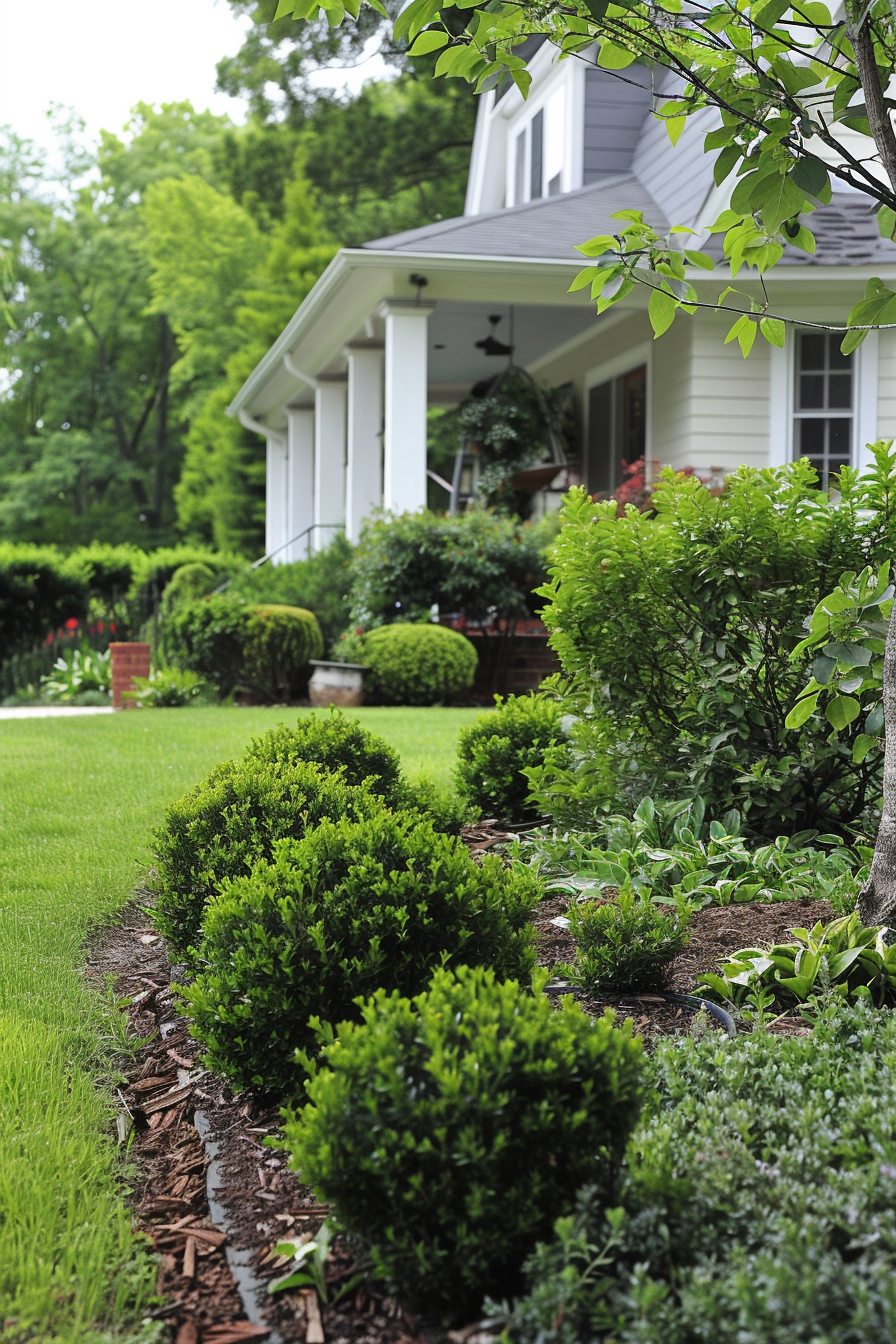
11. Budget-Friendly Low Maintenance Landscaping
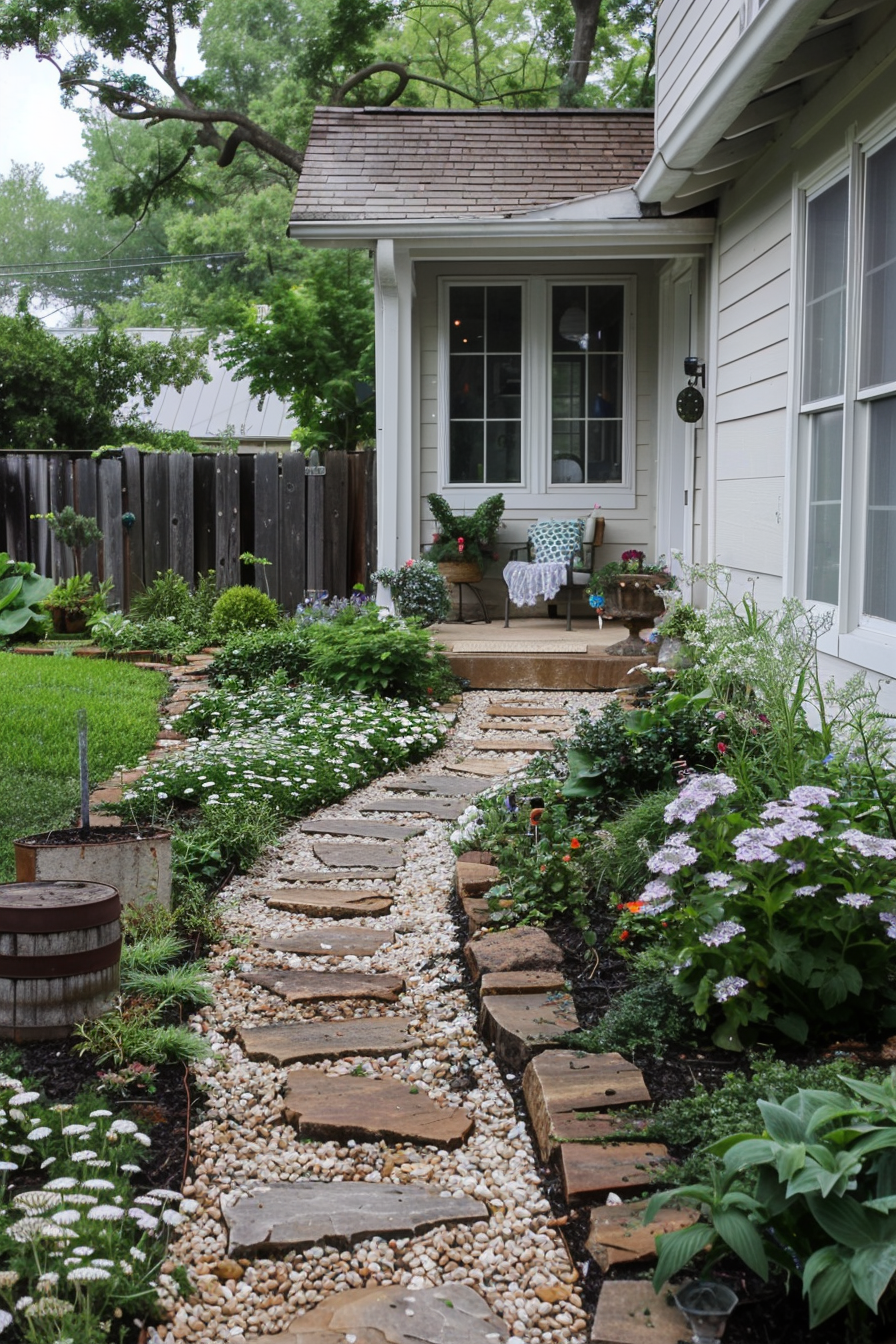
Creating a beautiful landscape on a budget is possible with thoughtful planning and resourcefulness. Start by selecting inexpensive, low-maintenance plants such as perennials and ground covers that require little care and come back year after year. Consider using native plants, which are often more affordable and better suited to local conditions, reducing the need for additional resources.
Repurposing materials can also help keep costs down. Use reclaimed wood, stones, or bricks for pathways, borders, and garden beds. These materials add character and charm to your landscape without breaking the bank. Look for opportunities to recycle or upcycle items like old containers or furniture to use as unique planters or garden features.
Reduce maintenance costs by focusing on xeriscaping techniques, which minimize the need for watering. Group plants with similar water needs together and use mulch or gravel to conserve soil moisture. Invest in a rain barrel to collect and reuse rainwater for irrigation. By combining budget-friendly plants and materials with efficient water use, you can create a stunning, low-maintenance garden without overspending.
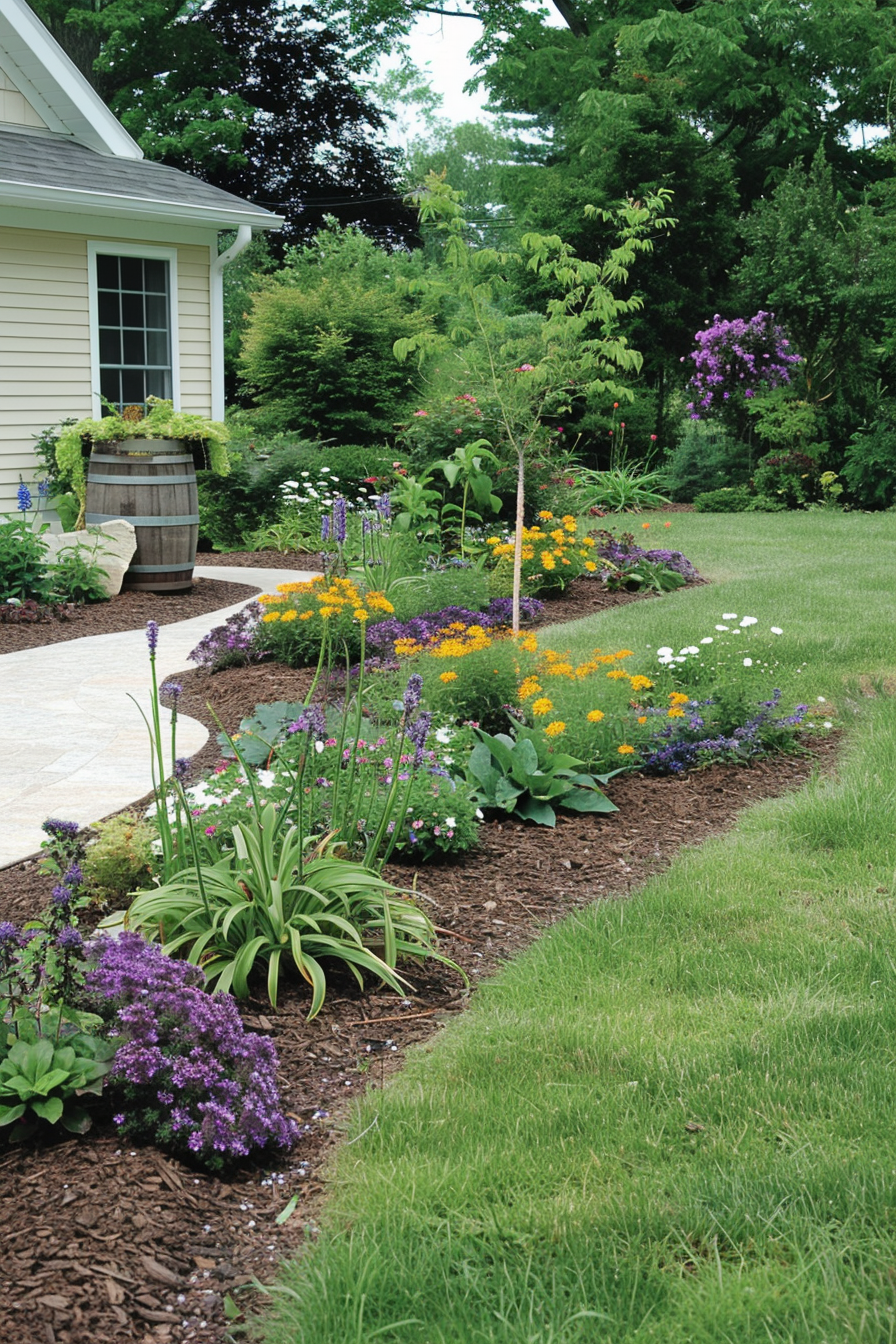
12. Small Space Low Maintenance Landscaping
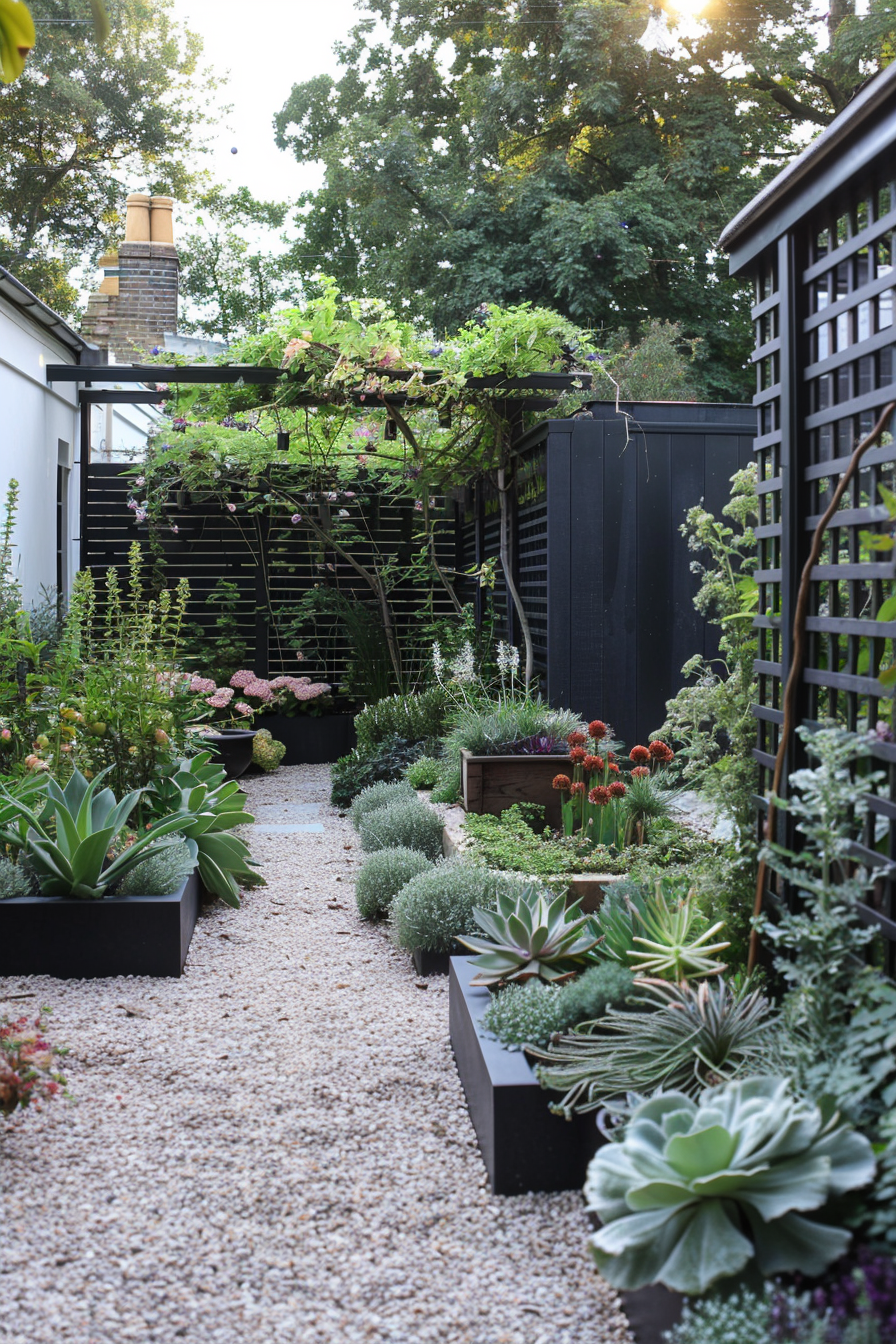
Small spaces can be transformed into charming, low-maintenance gardens with the right approach. Start by selecting compact, low-maintenance plants such as dwarf shrubs, succulents, and ornamental grasses that don’t require much room to grow. Vertical gardening techniques, like using trellises or wall-mounted planters, can maximize space and reduce the need for extensive ground cover.
Incorporate multifunctional elements like raised beds or container gardens that can provide structure and versatility in a small area. These features make it easy to manage plants and can be rearranged to suit changing needs or preferences. Use hardscape elements like pavers or gravel to define spaces and create paths, reducing the amount of grass or ground cover needed.
Keep the design simple and uncluttered to avoid overwhelming the space. Choose a cohesive color scheme and repeat a few key elements throughout the garden to create a unified look. Incorporate low-maintenance features like drip irrigation systems to ensure plants get the water they need without constant attention. By focusing on compact, easy-care plants and smart design, you can create a stunning garden in even the smallest spaces.
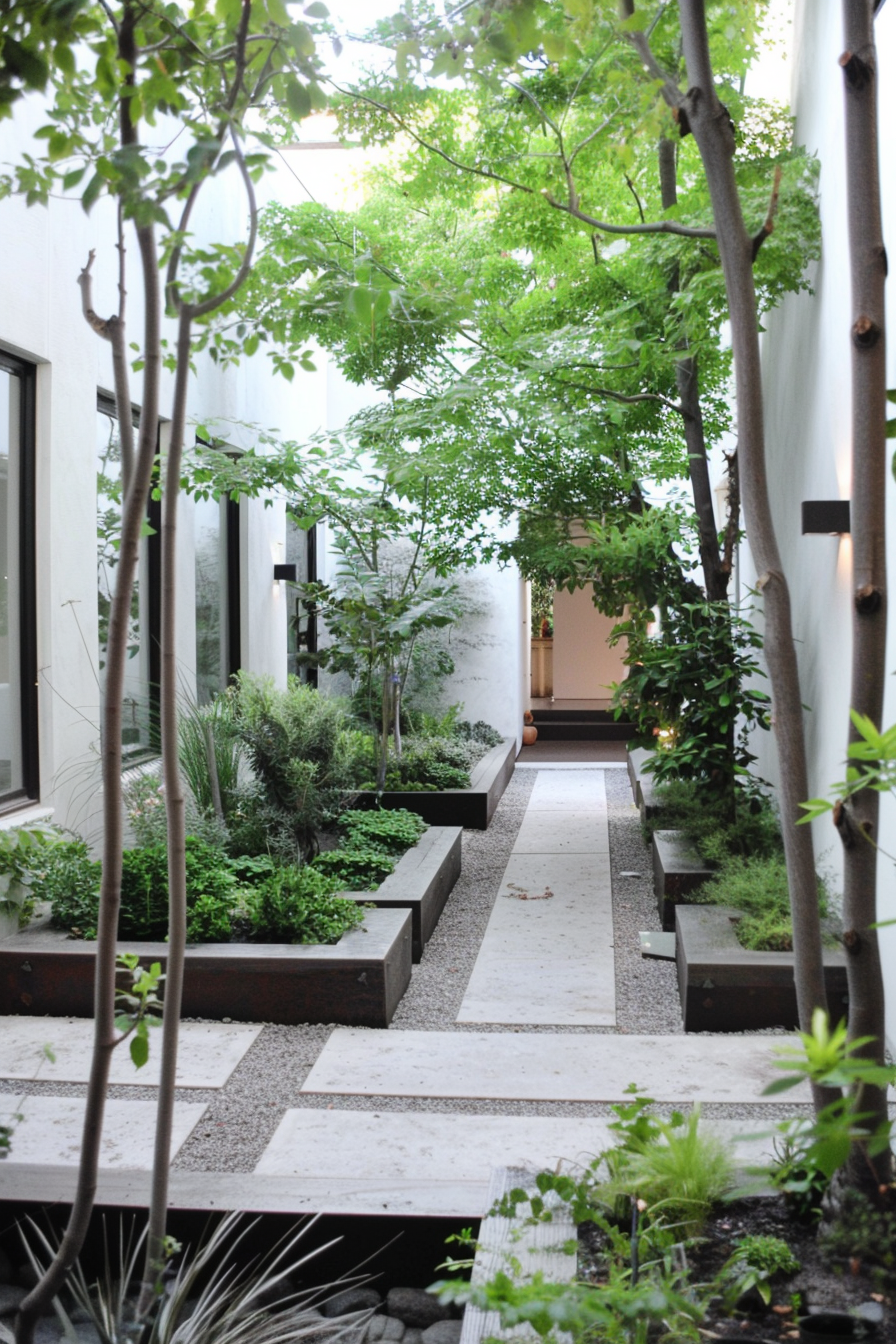
13. Landscaping for Sloped Yards
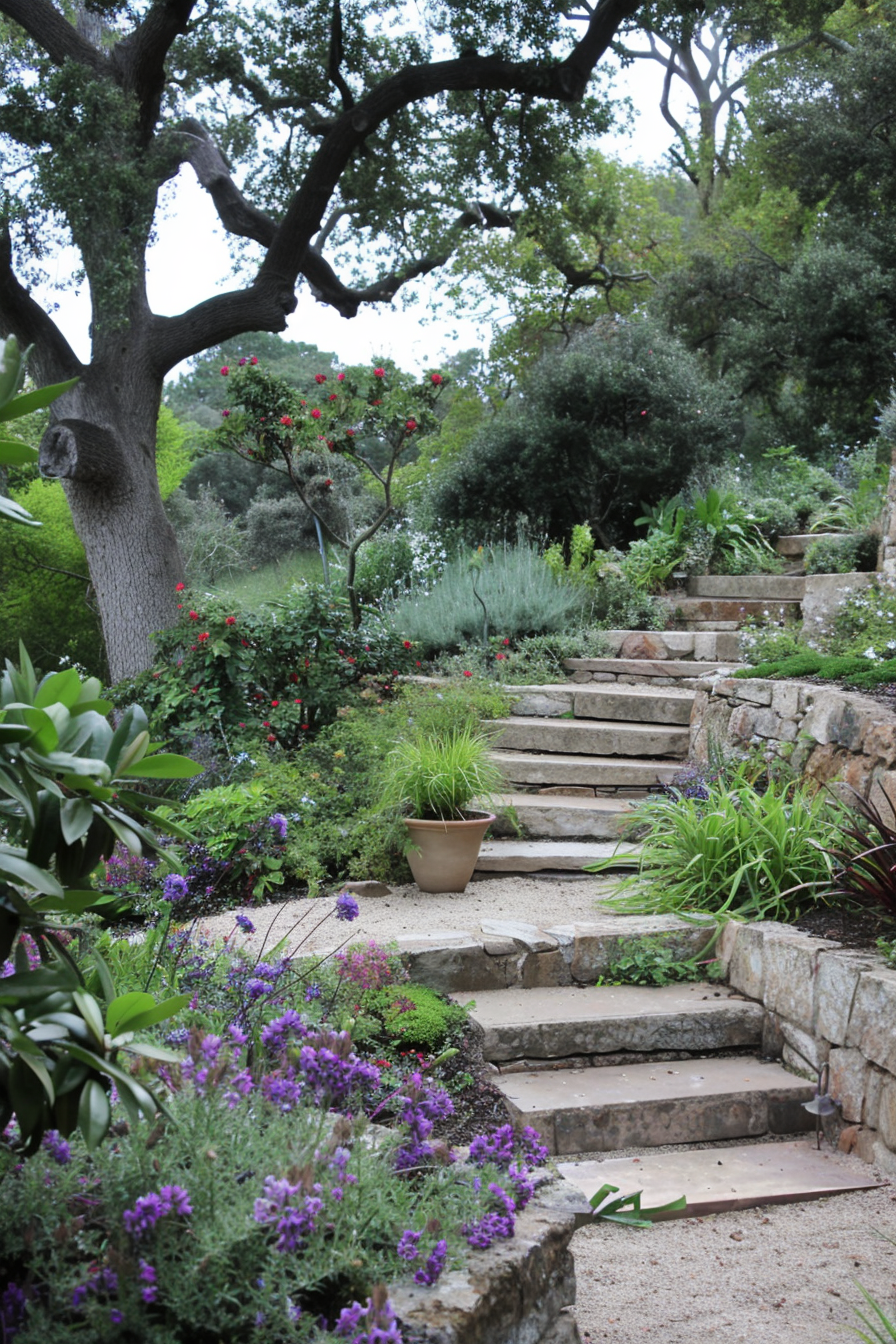
Sloped yards present unique challenges but can be transformed into beautiful, low-maintenance landscapes with the right approach. Start by stabilizing the slope with terracing or retaining walls made from natural stone or wood. These structures not only prevent erosion but also create flat areas for planting and reduce maintenance.
Choose plants that thrive on slopes and require little care, such as ground covers and deep-rooted perennials. Varieties like creeping juniper, daylilies, or sedums can help stabilize the soil and add color and texture without extensive upkeep. Use mulch or gravel on the terraces to reduce erosion and retain moisture, cutting down on watering and weeding.
Incorporate hardscape features like stone steps or pathways to provide easy access and reduce the need for mowing. Use low-maintenance shrubs or grasses on the higher terraces to create a layered effect and minimize the need for regular pruning. By focusing on erosion control and easy-care plants, you can turn a sloped yard into a stunning, low-maintenance landscape.
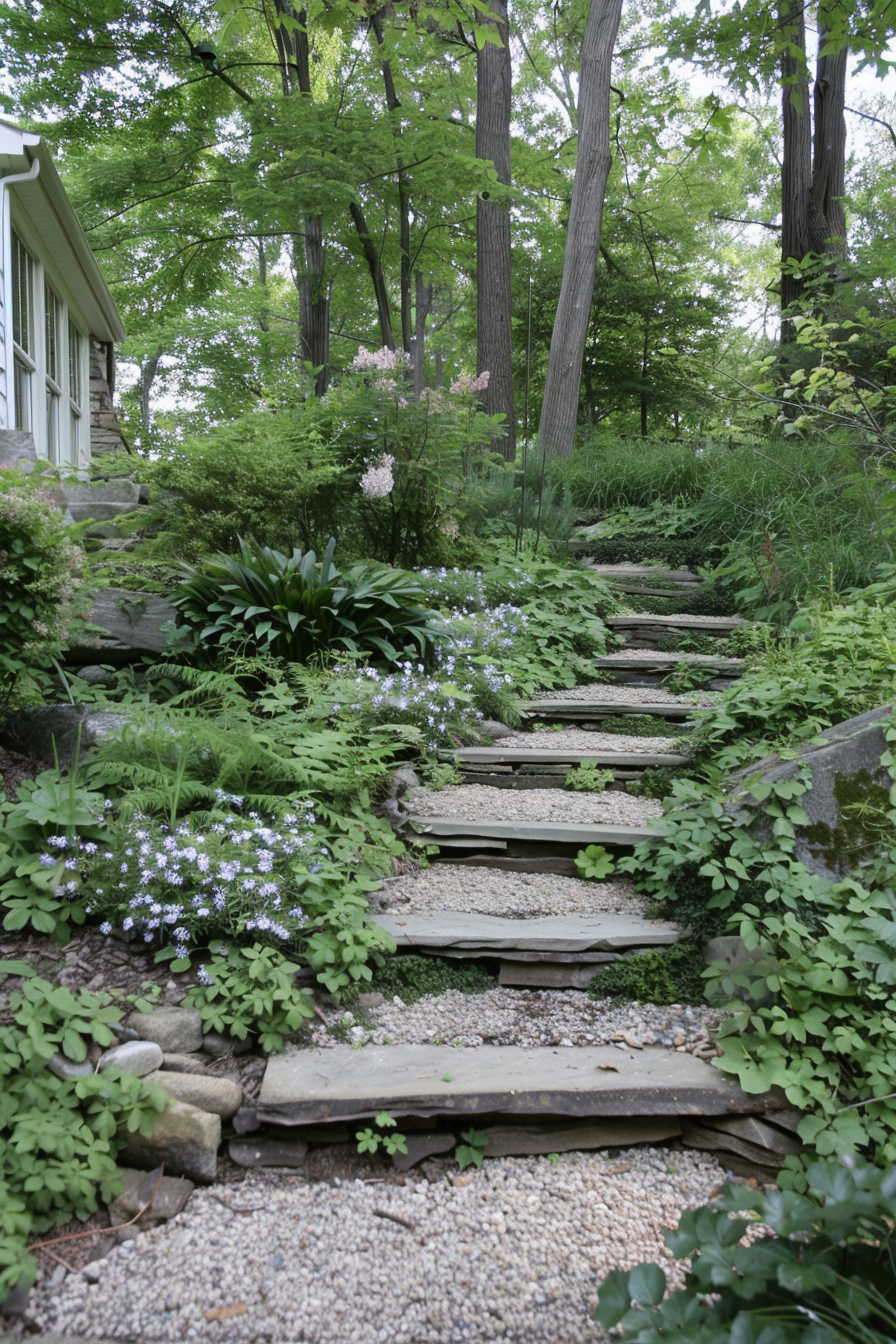
14. Fence Ideas for Low Maintenance Landscaping
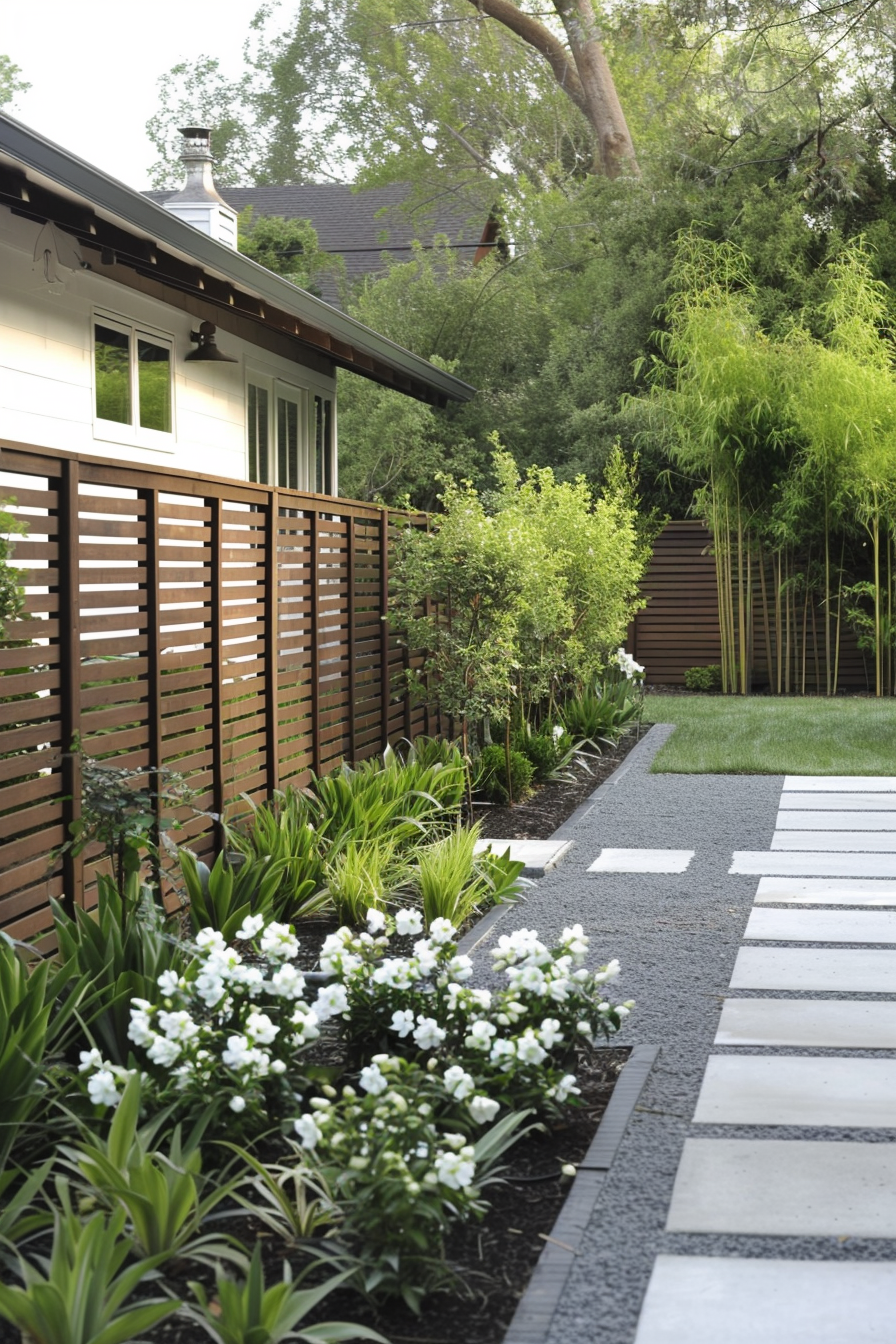
Choosing the right fence can enhance your landscape while reducing maintenance. Opt for materials that require little upkeep, such as vinyl, composite, or metal fencing. These options are durable, weather-resistant, and often come in a variety of styles and colors that can complement any garden design.
For a natural look, consider installing a living fence made from hardy, low-maintenance plants like bamboo or evergreen shrubs. These fences provide privacy and greenery without the need for painting or repairs. Be sure to choose plants that suit your climate and growth conditions to ensure they remain low-maintenance over time.
Incorporate functional elements like gates or arbors to add visual interest and improve access. Use fence designs that allow for easy cleaning and minimal upkeep, such as smooth surfaces that don’t trap dirt or debris. By selecting durable materials and low-maintenance plants, you can create a fence that enhances your landscape while requiring little effort to maintain.
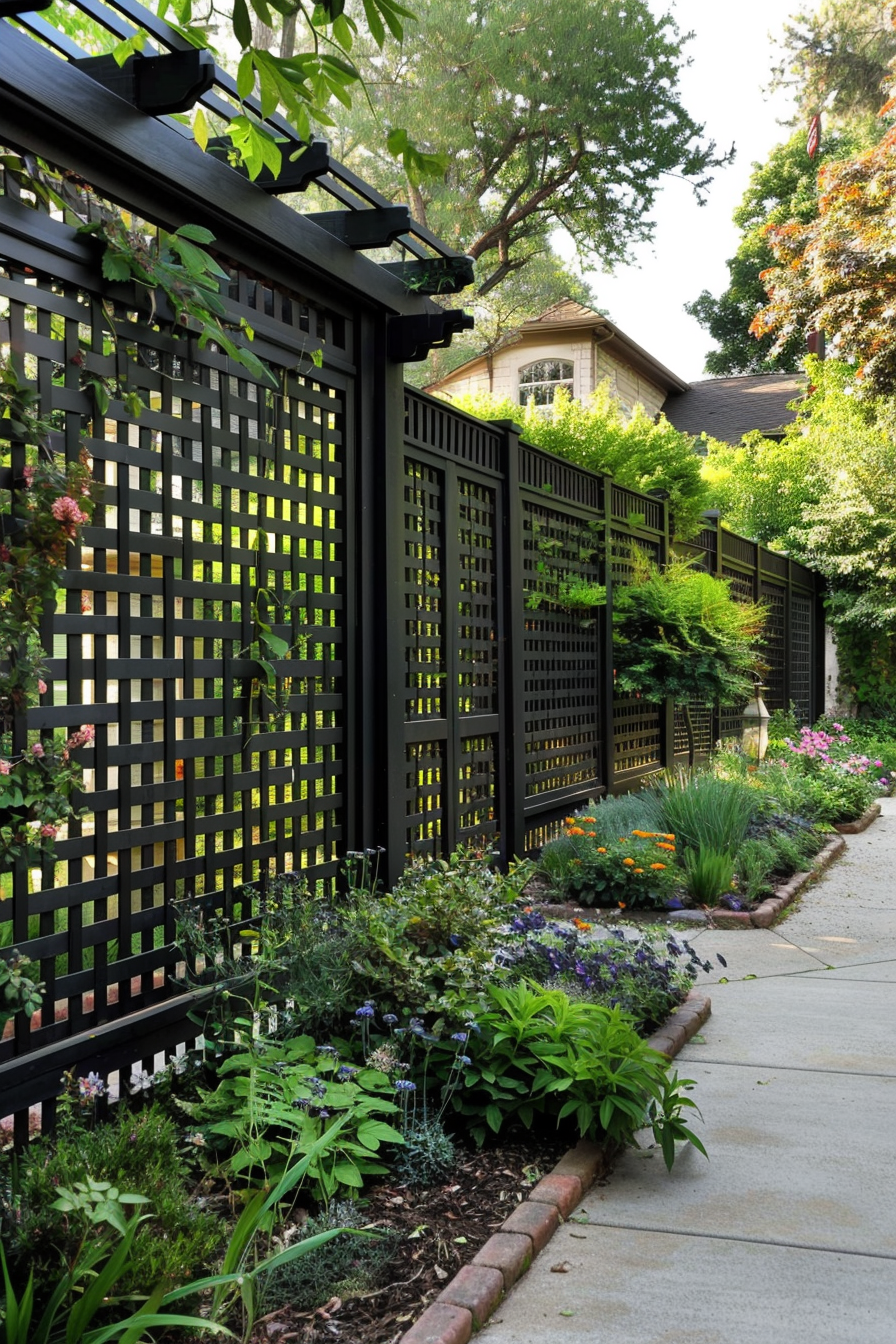
15. Incorporating Grass for Easy Shrubs
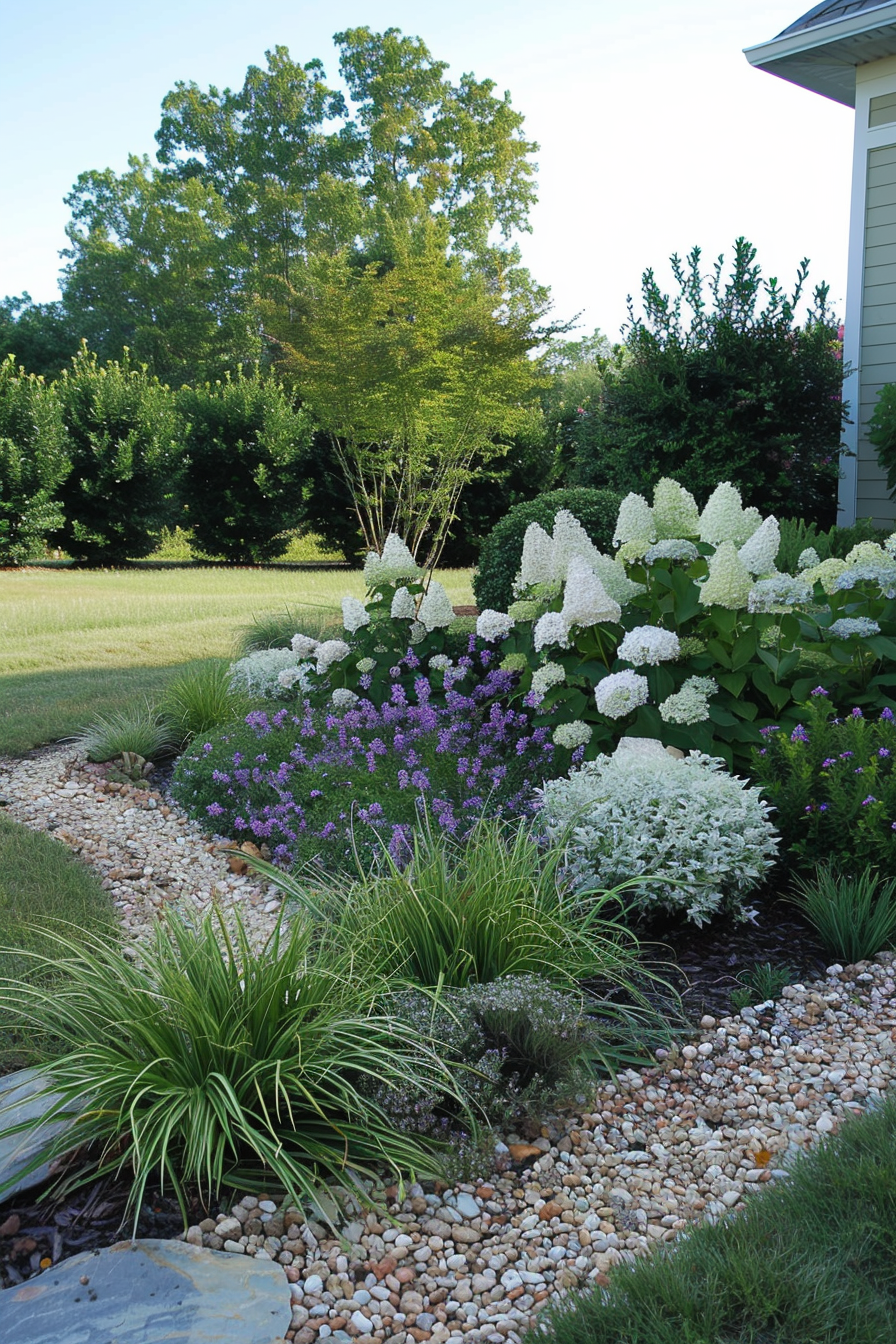
Combining grass with easy-care shrubs can create a lush, low-maintenance landscape that is both beautiful and functional. Start by choosing slow-growing, drought-tolerant grasses such as fescue or buffalo grass that require minimal mowing and watering. These grasses provide a green backdrop with less maintenance, ideal for complementing low-maintenance shrubs.
Select shrubs that are hardy and require little pruning, such as boxwoods, junipers, or hydrangeas. Plant them in groups or as borders to define spaces and add structure to your landscape. Using mulch around the base of shrubs helps retain soil moisture and reduces weeds, further simplifying maintenance.
Create a balance between grassy areas and shrub plantings to reduce the need for extensive lawn care. Use hardscape elements like stone pathways or patios to break up the space and reduce the overall lawn area. By combining low-maintenance grasses and shrubs, you can enjoy a lush and attractive garden without the hassle of constant upkeep.
